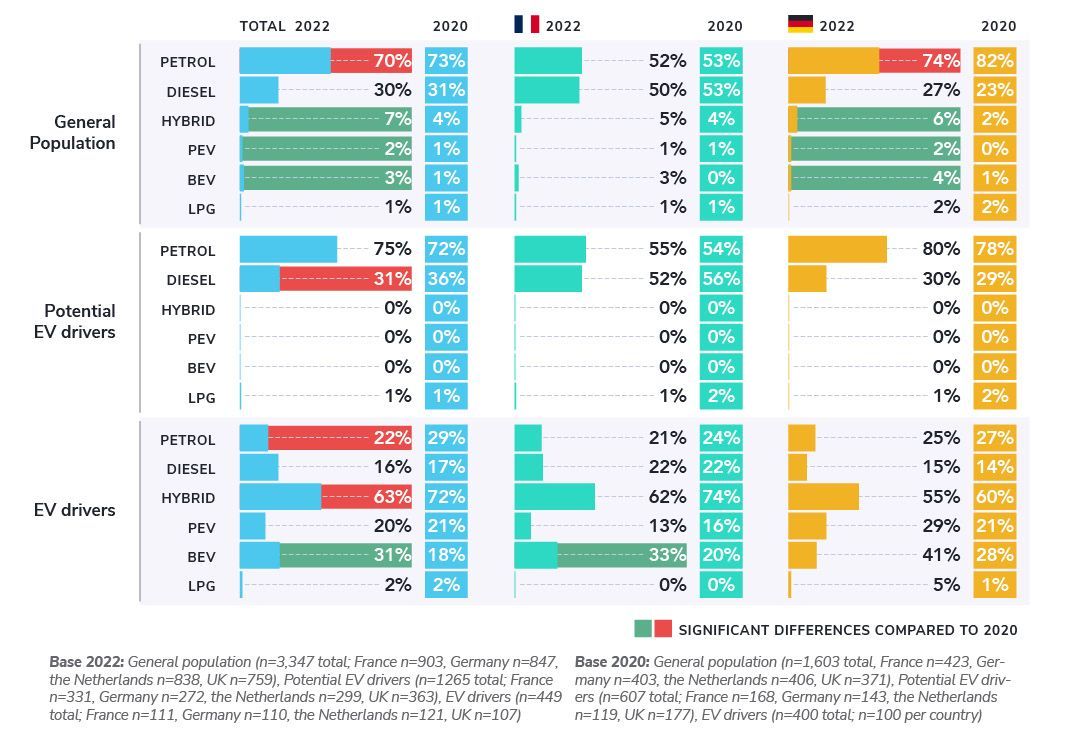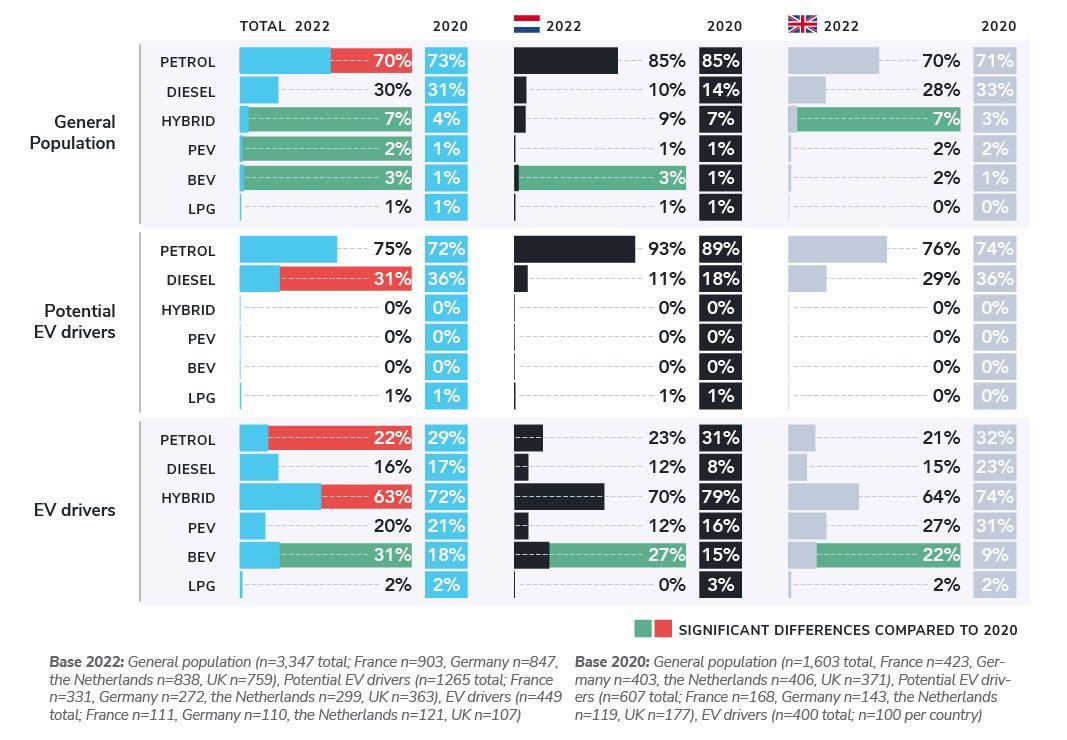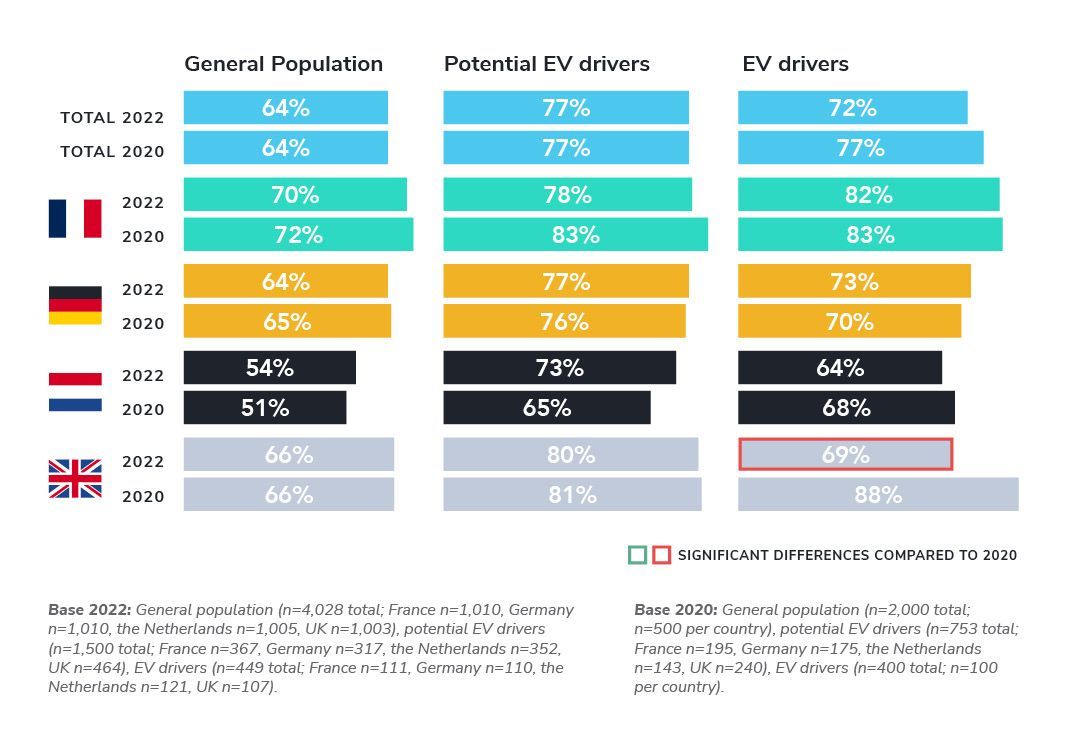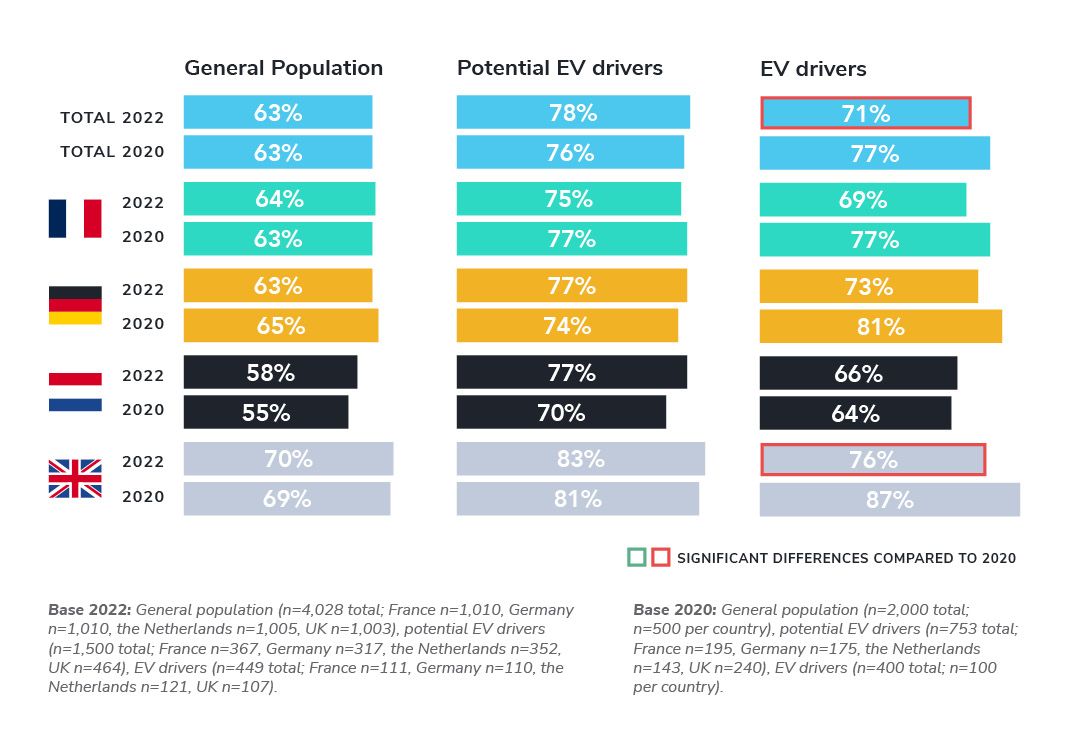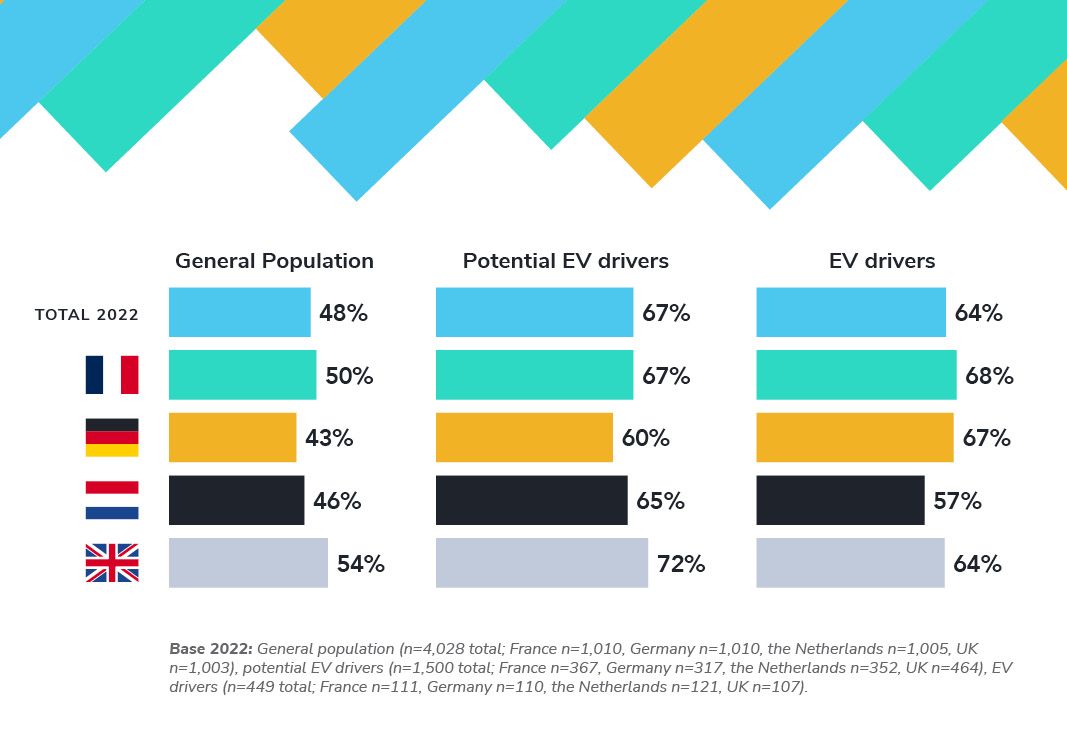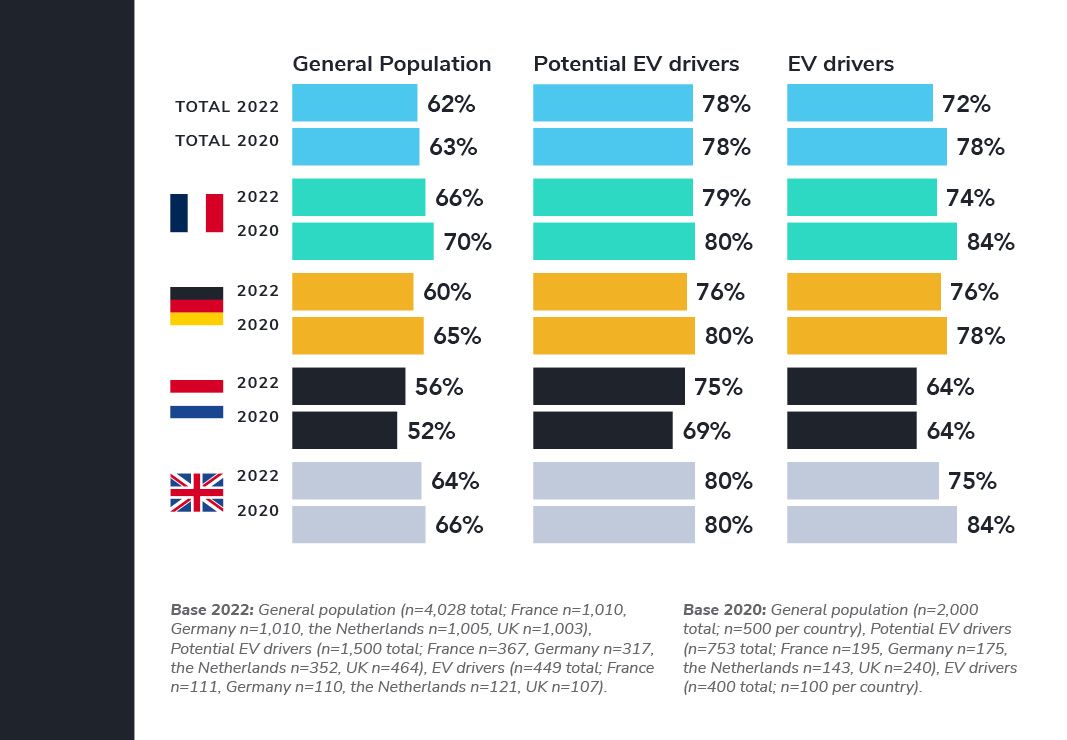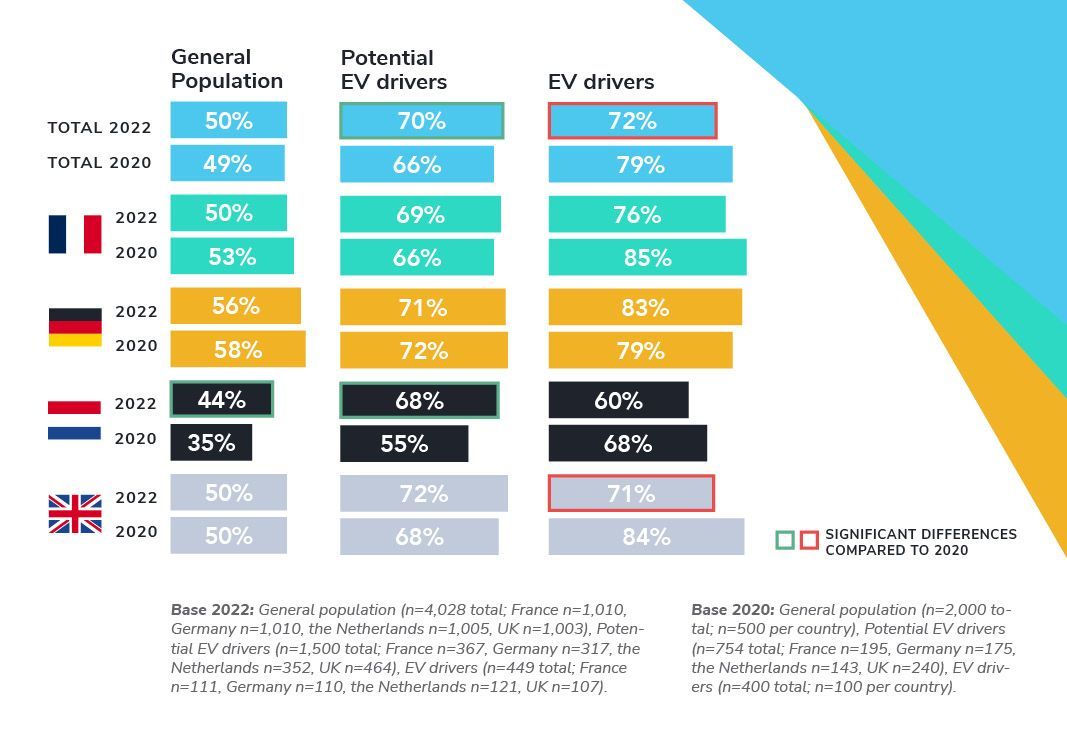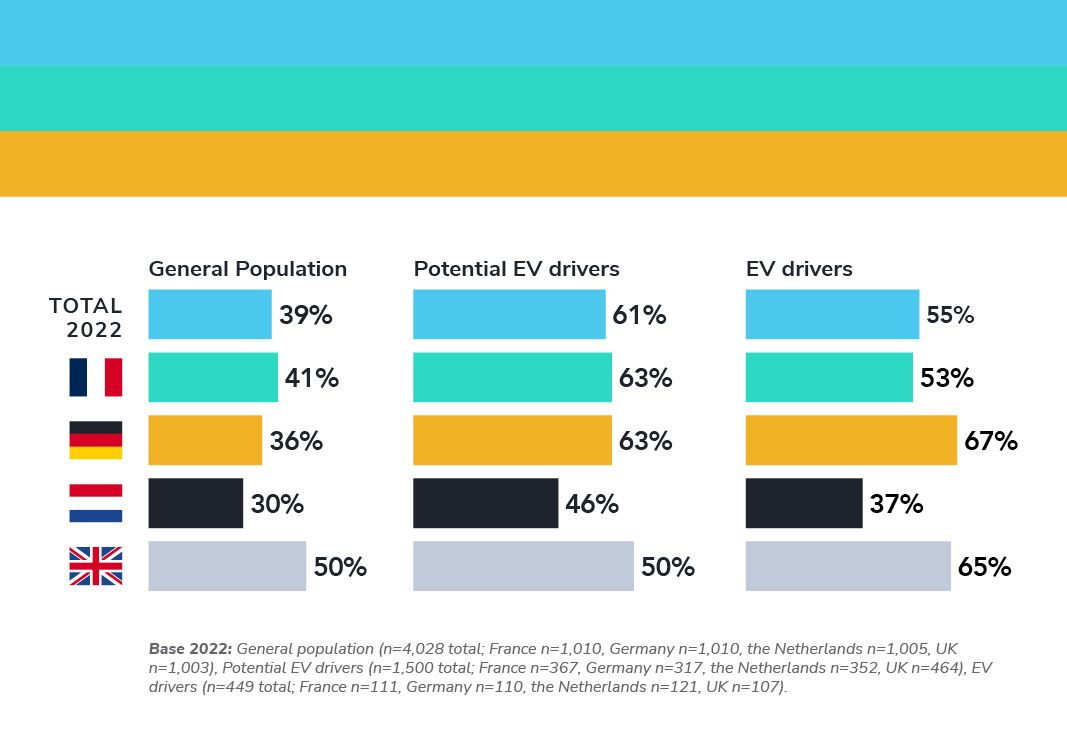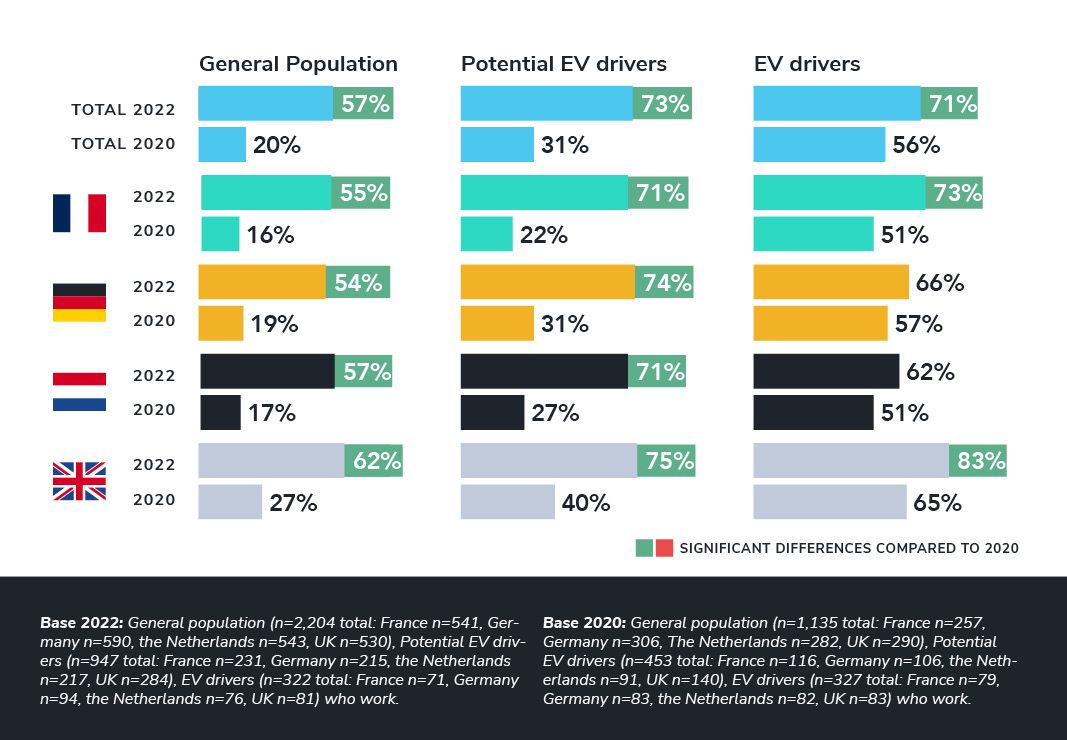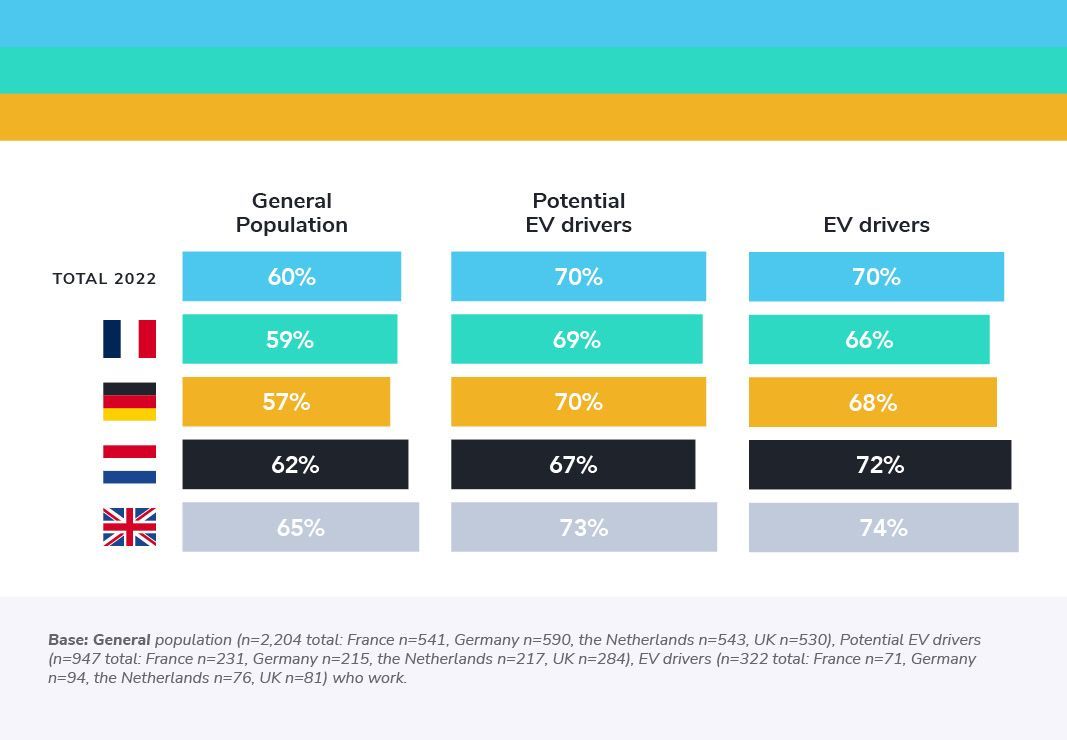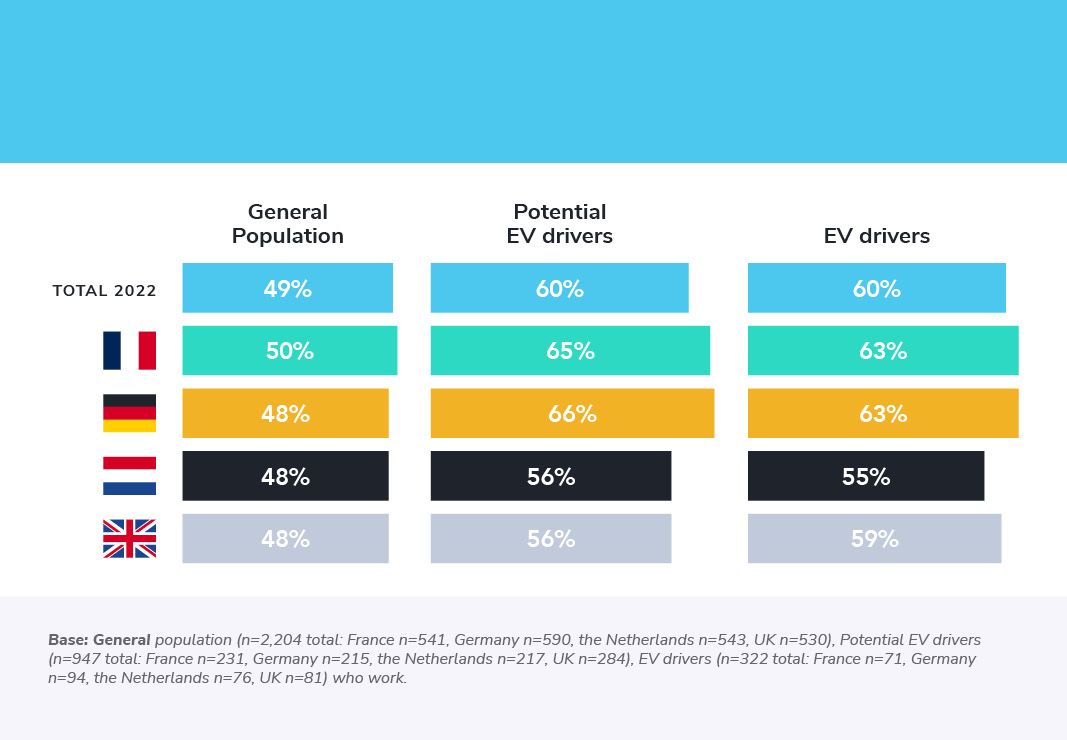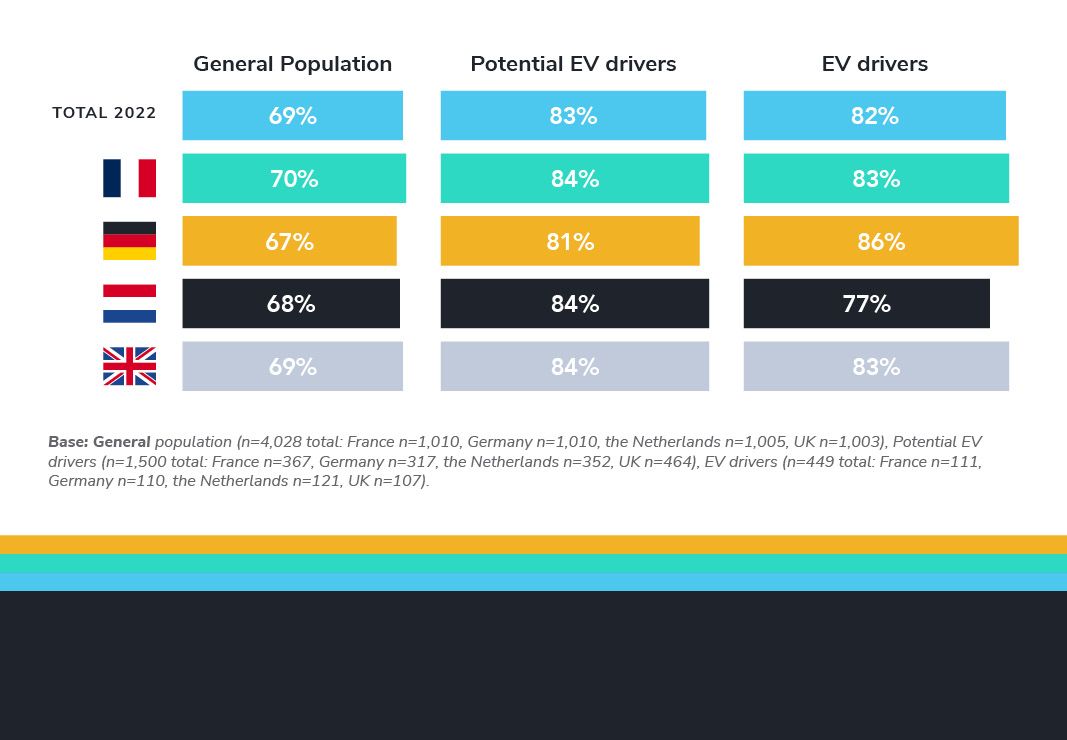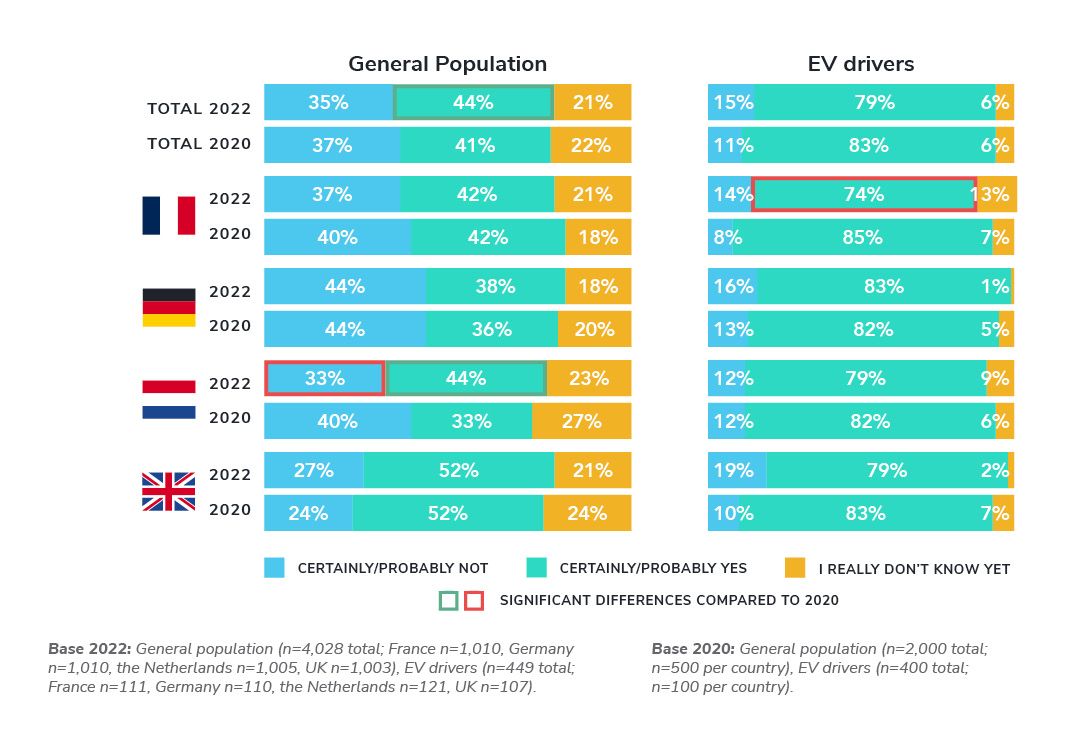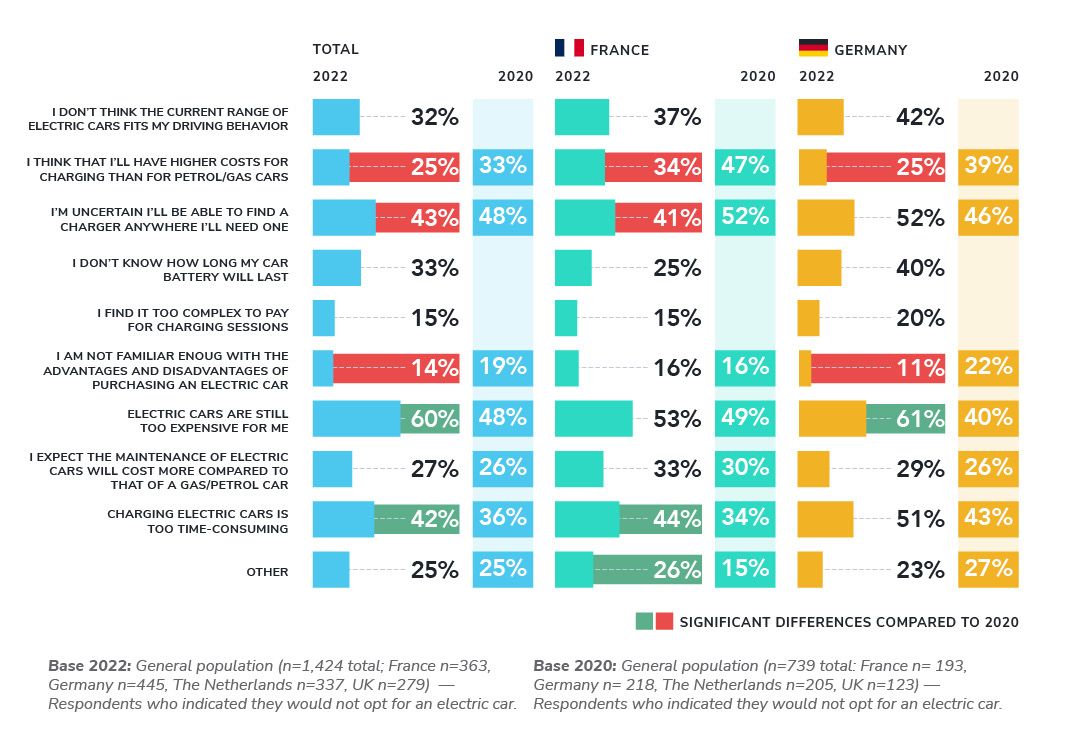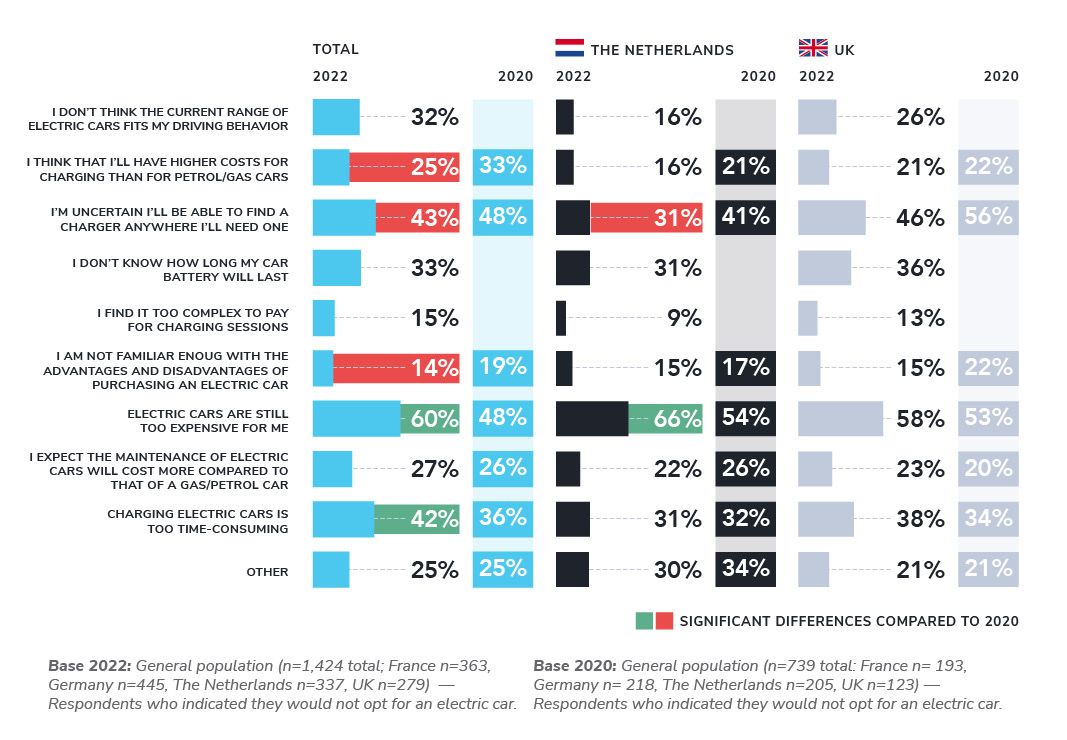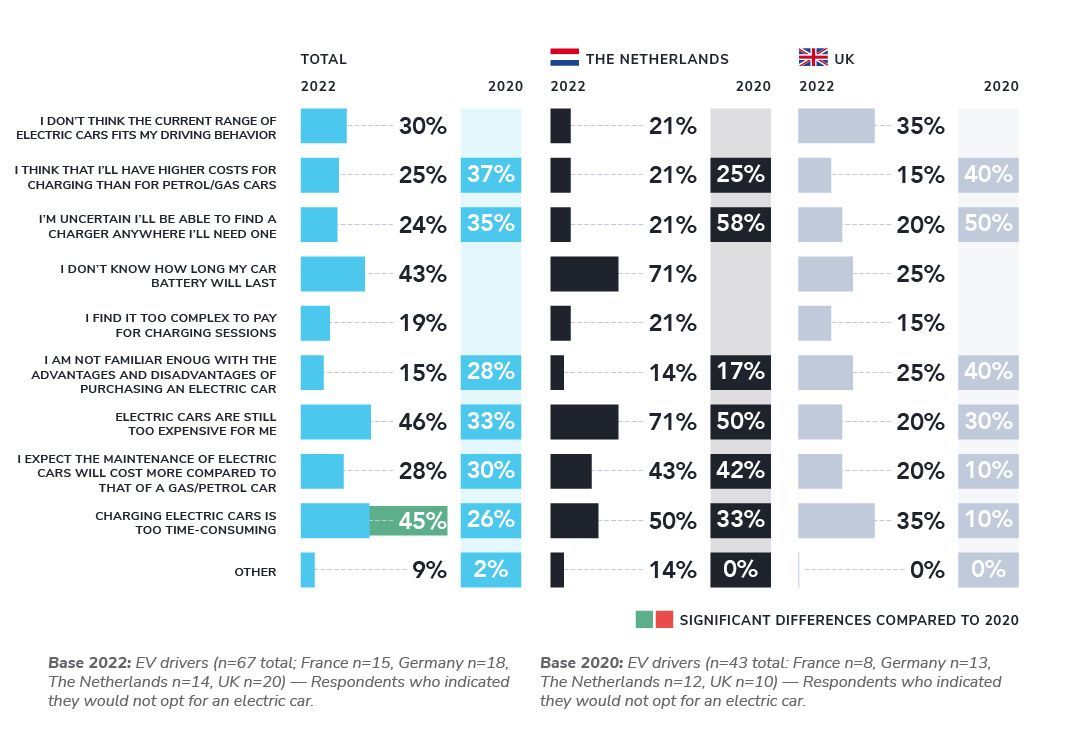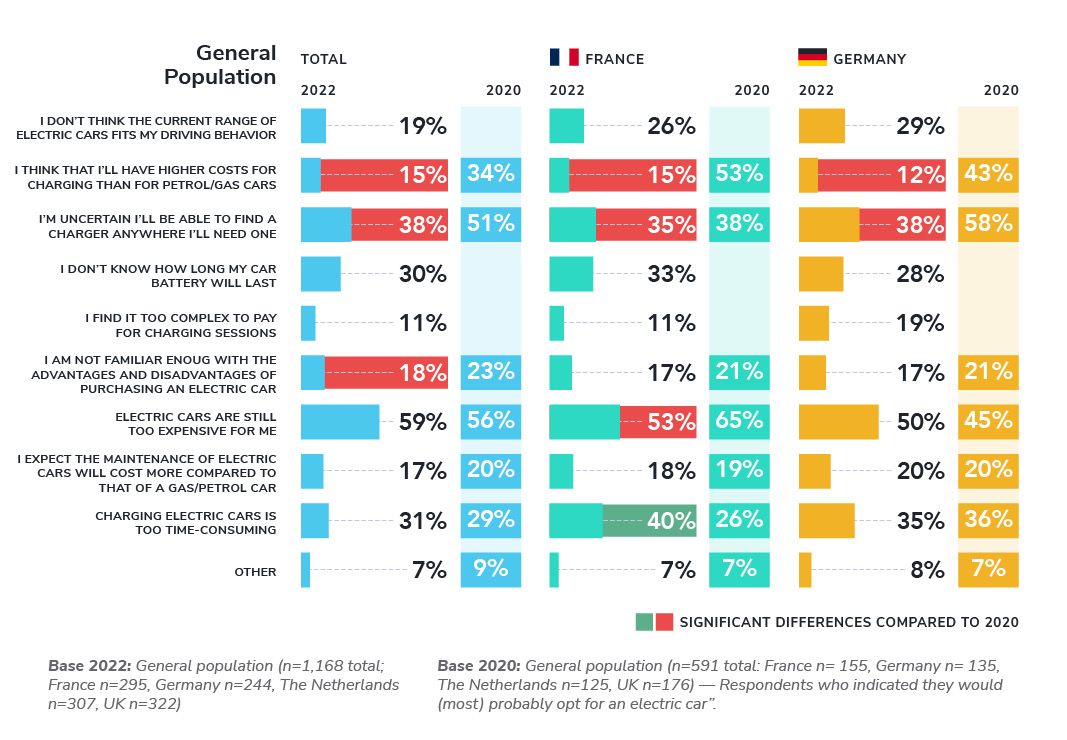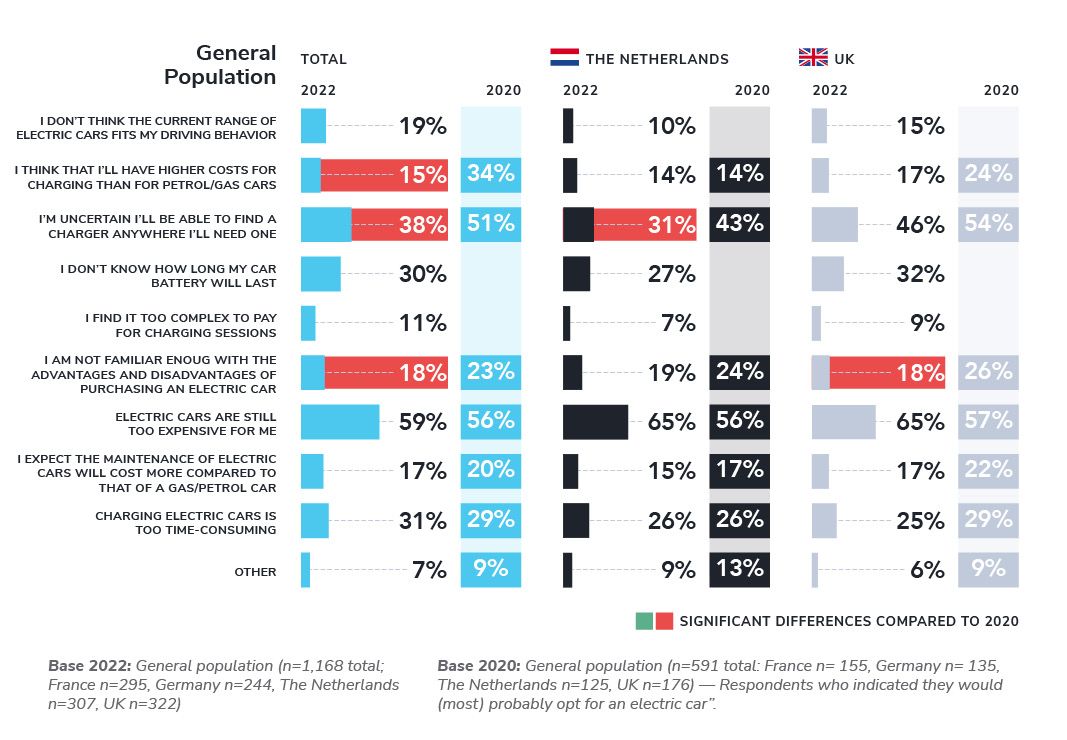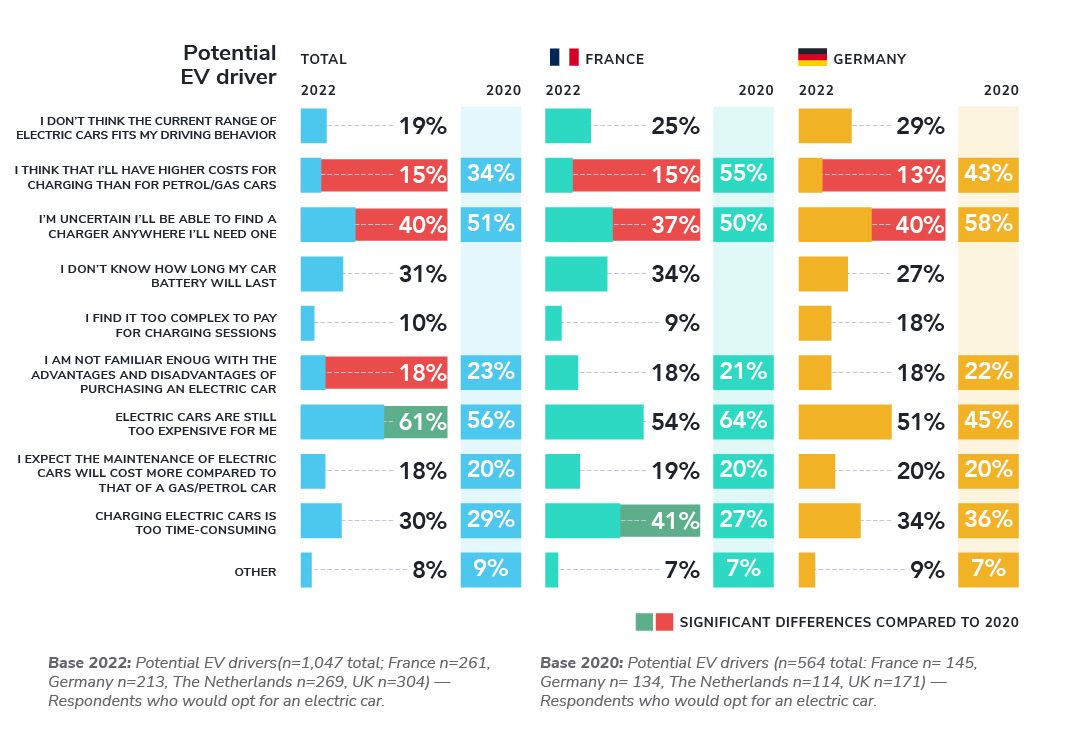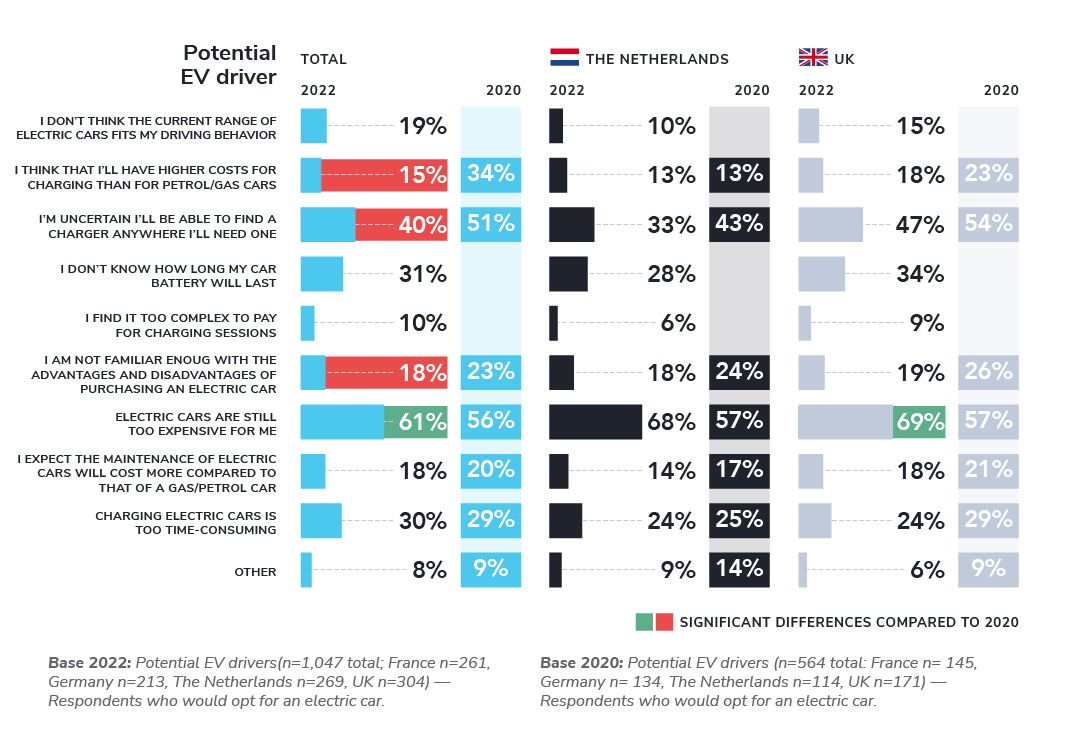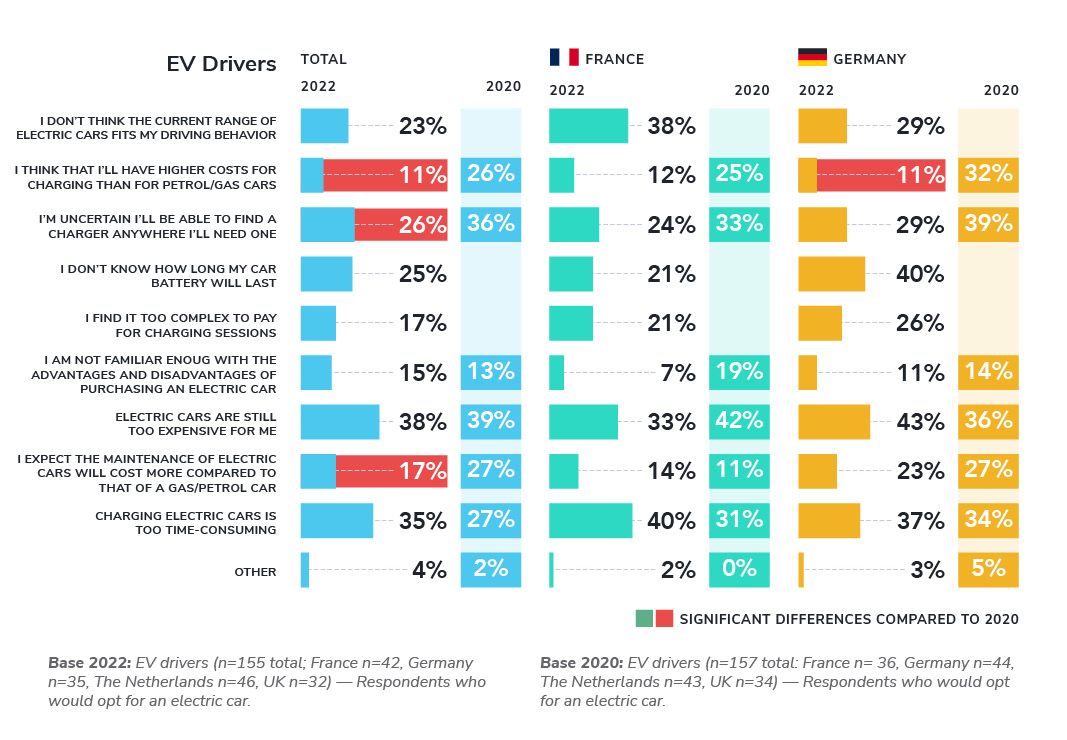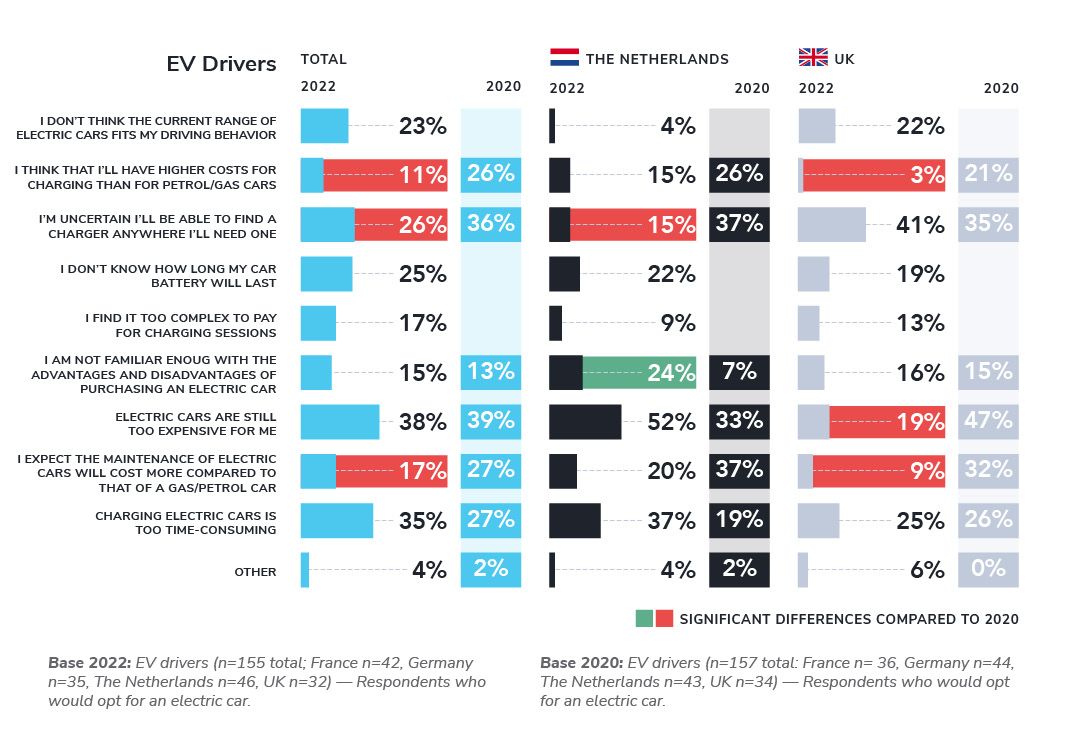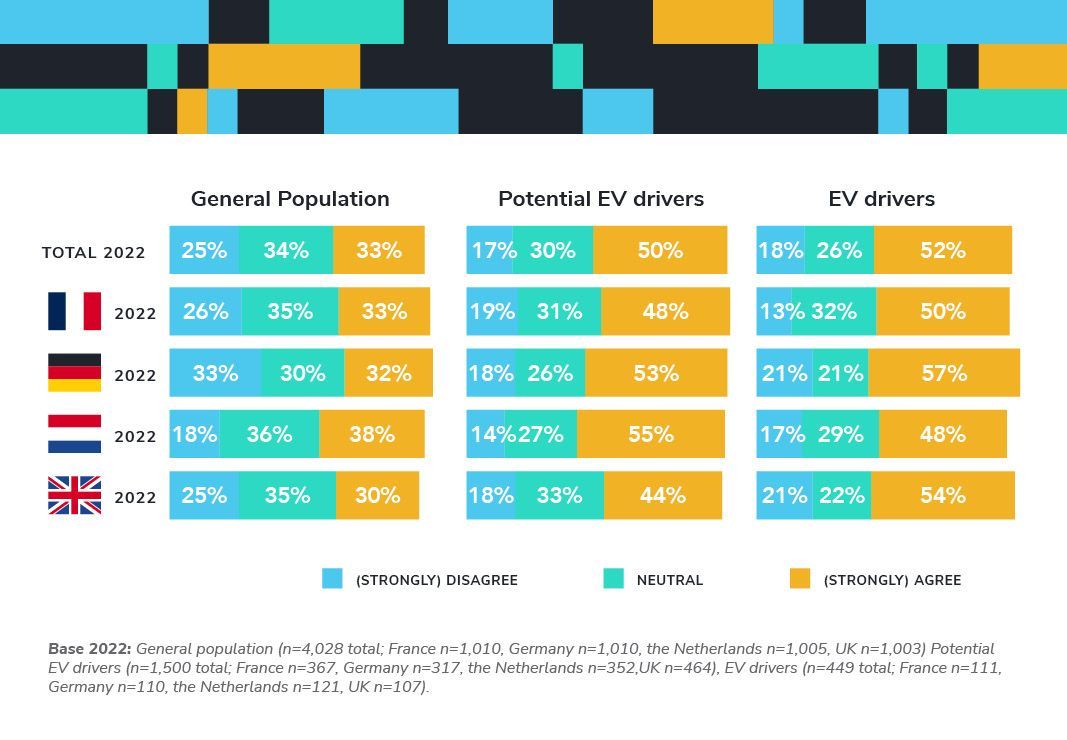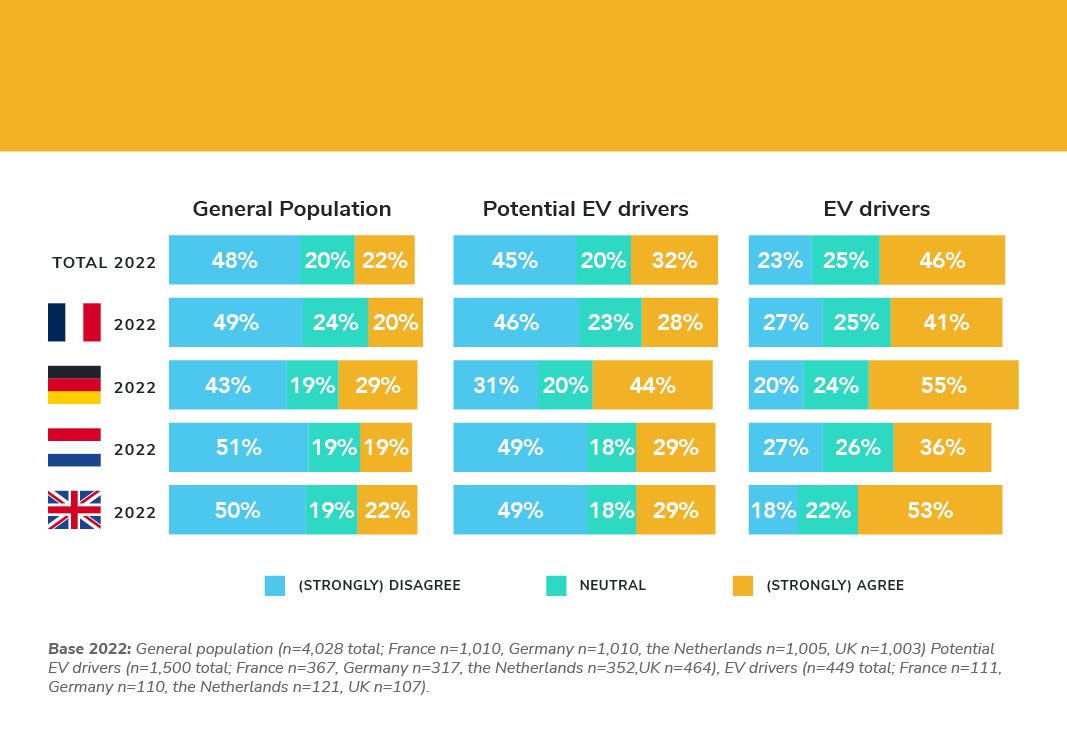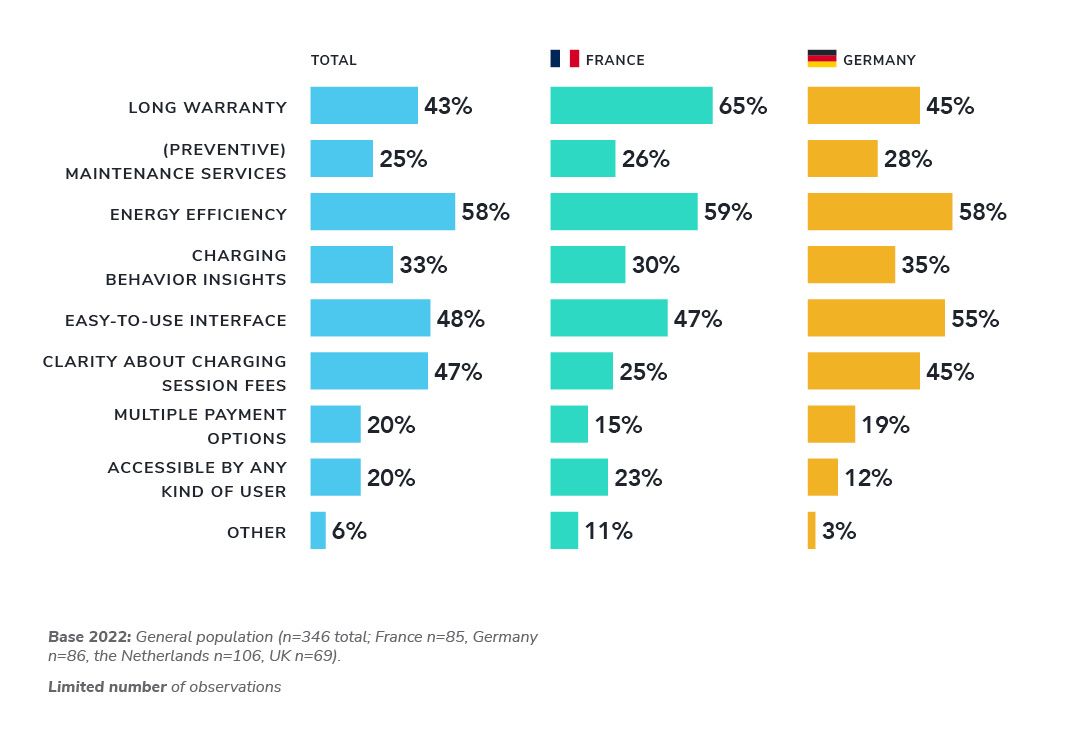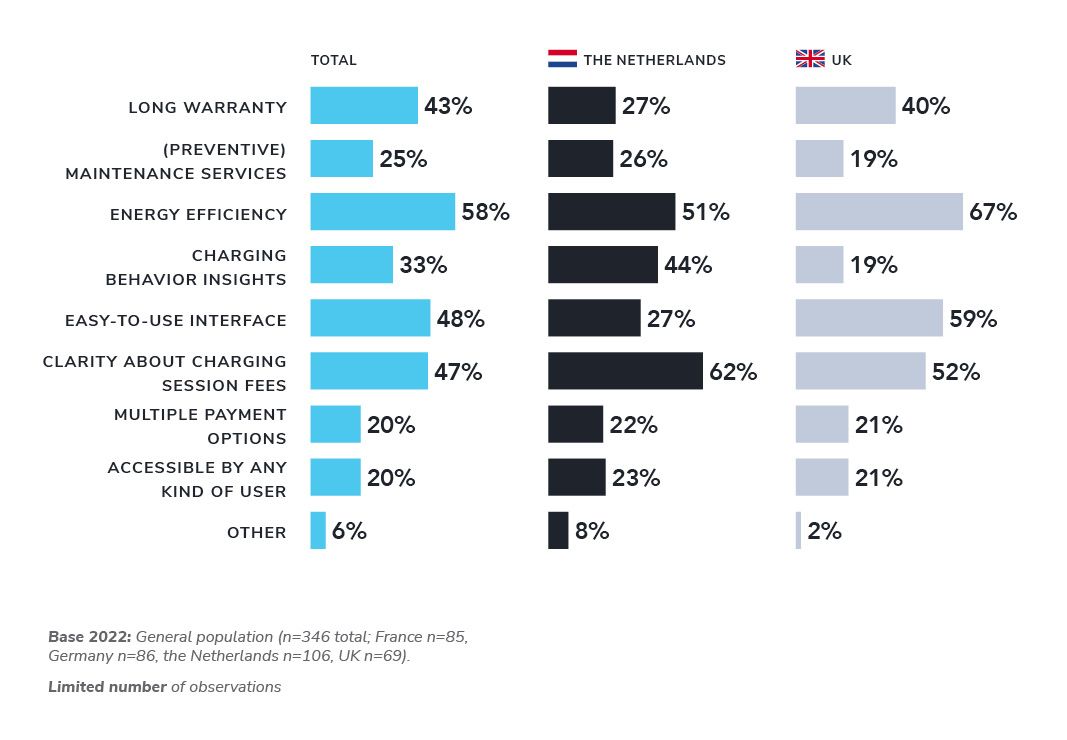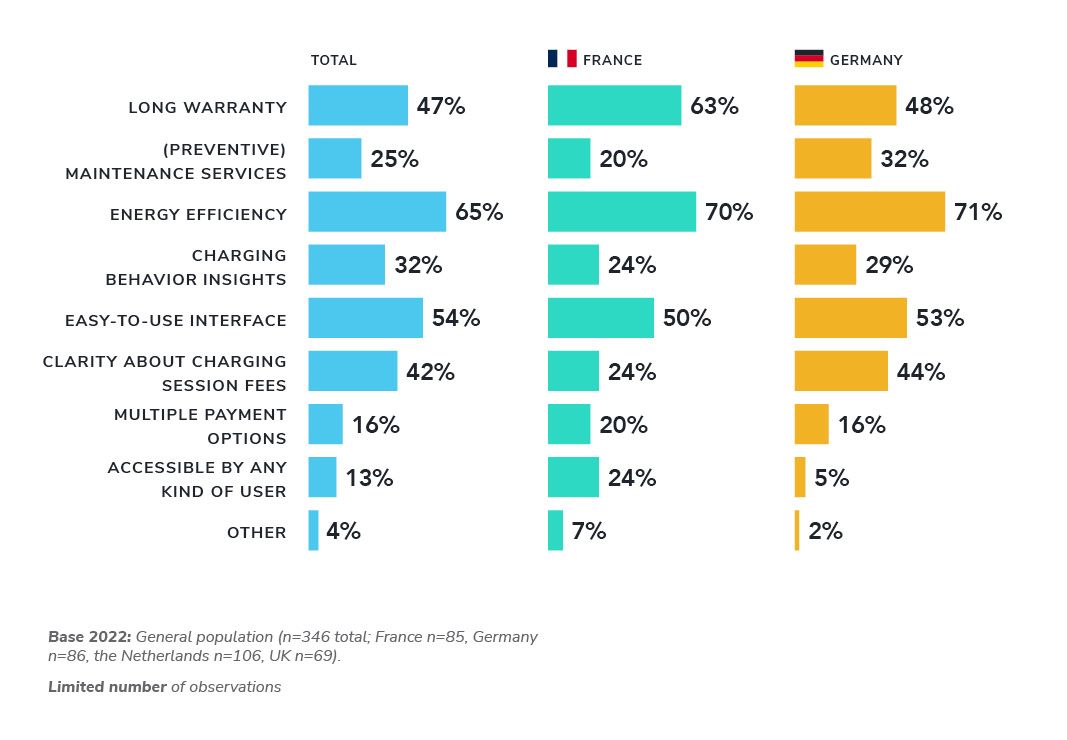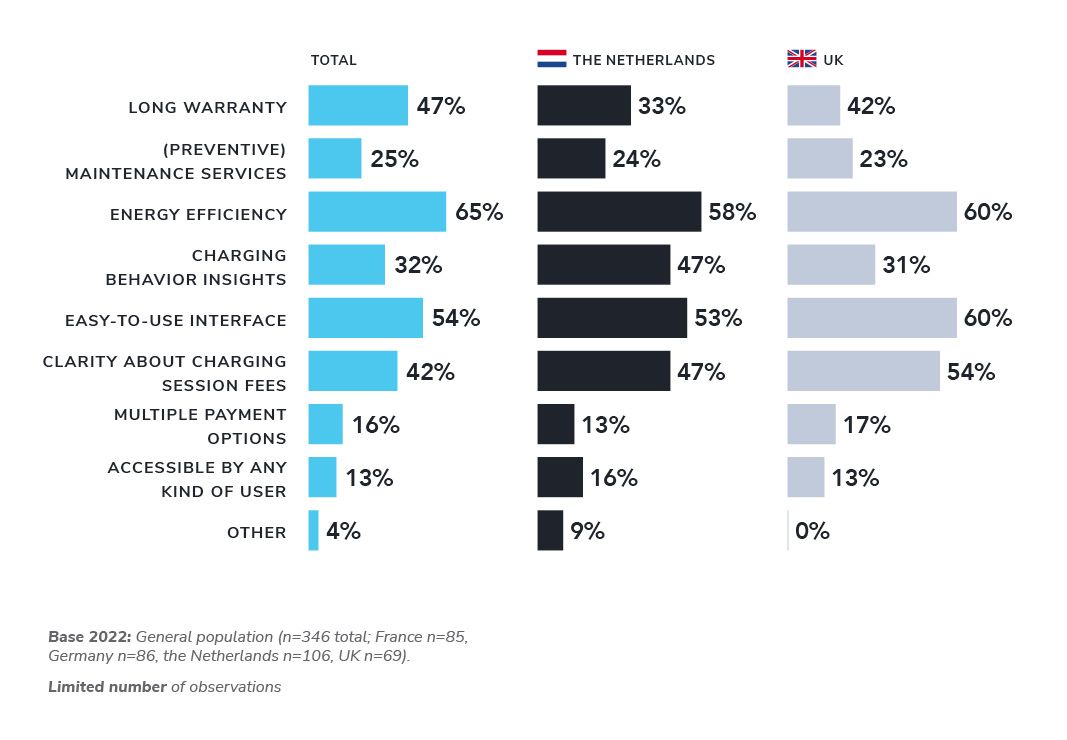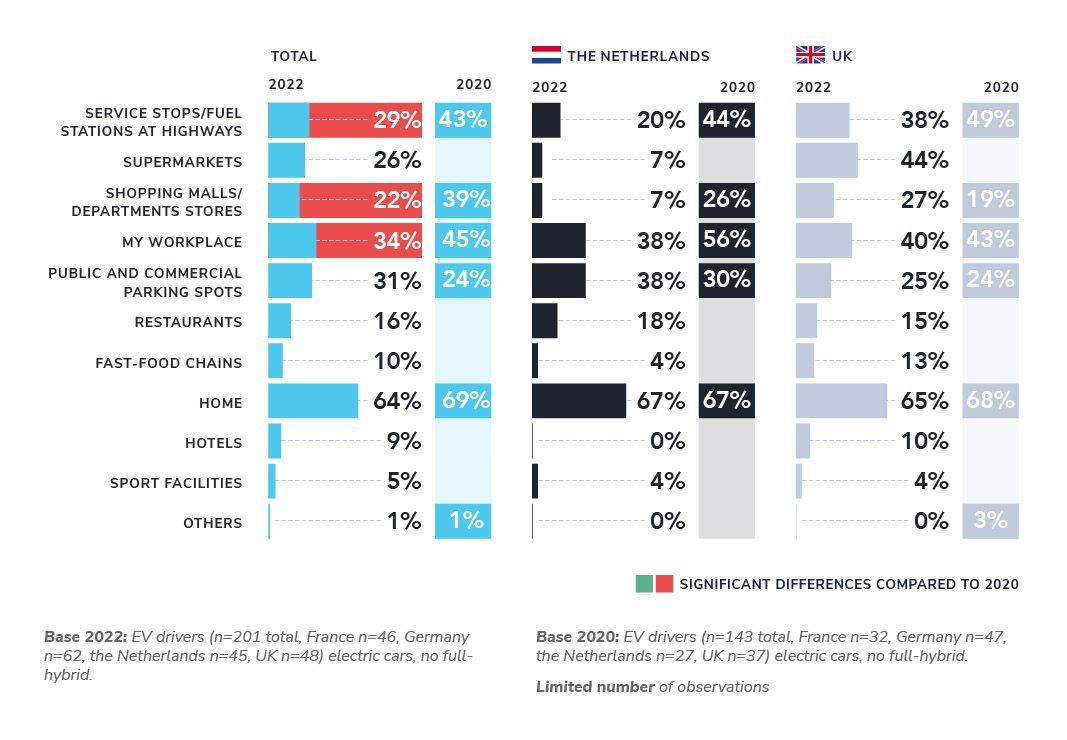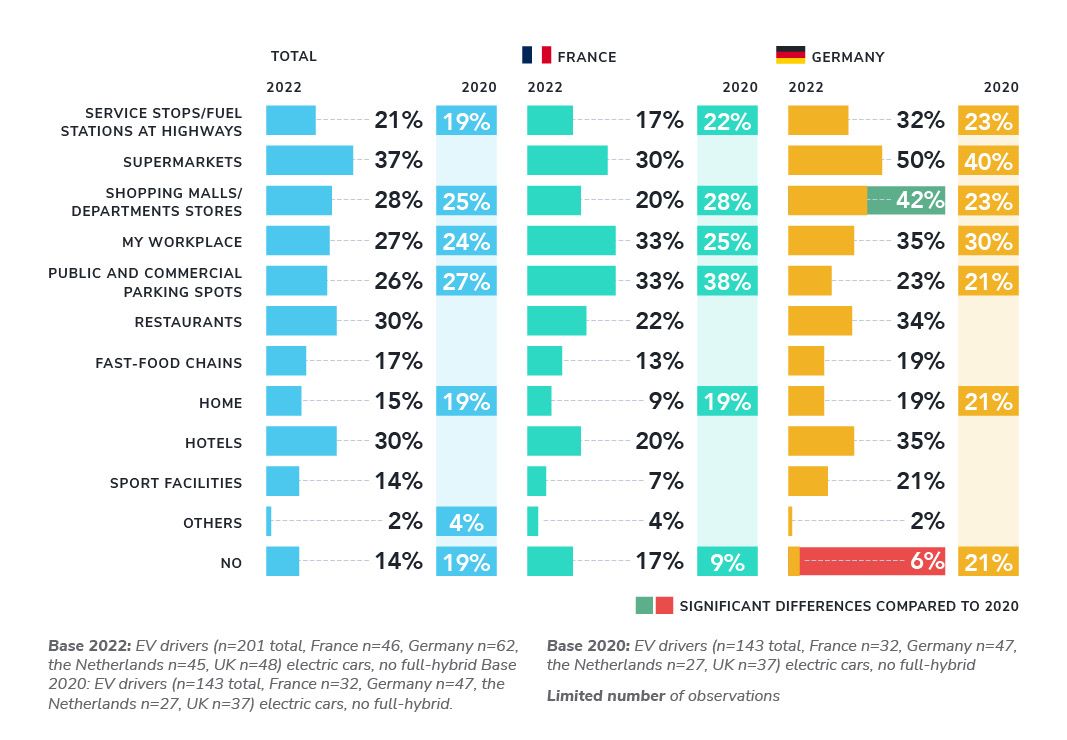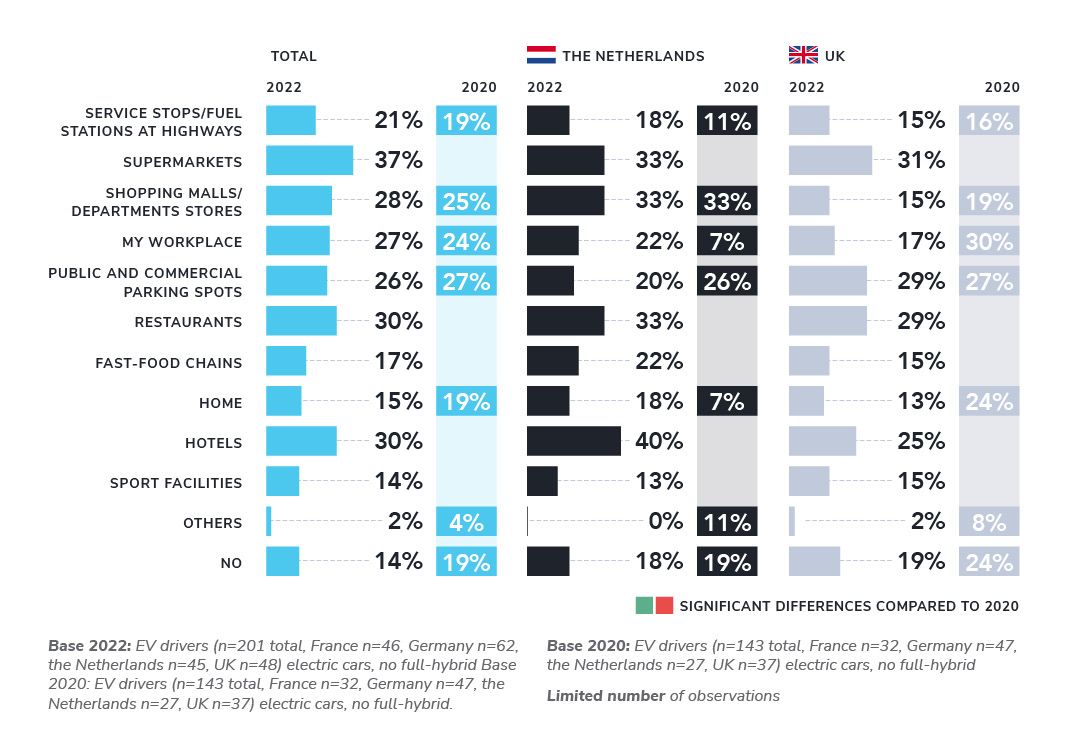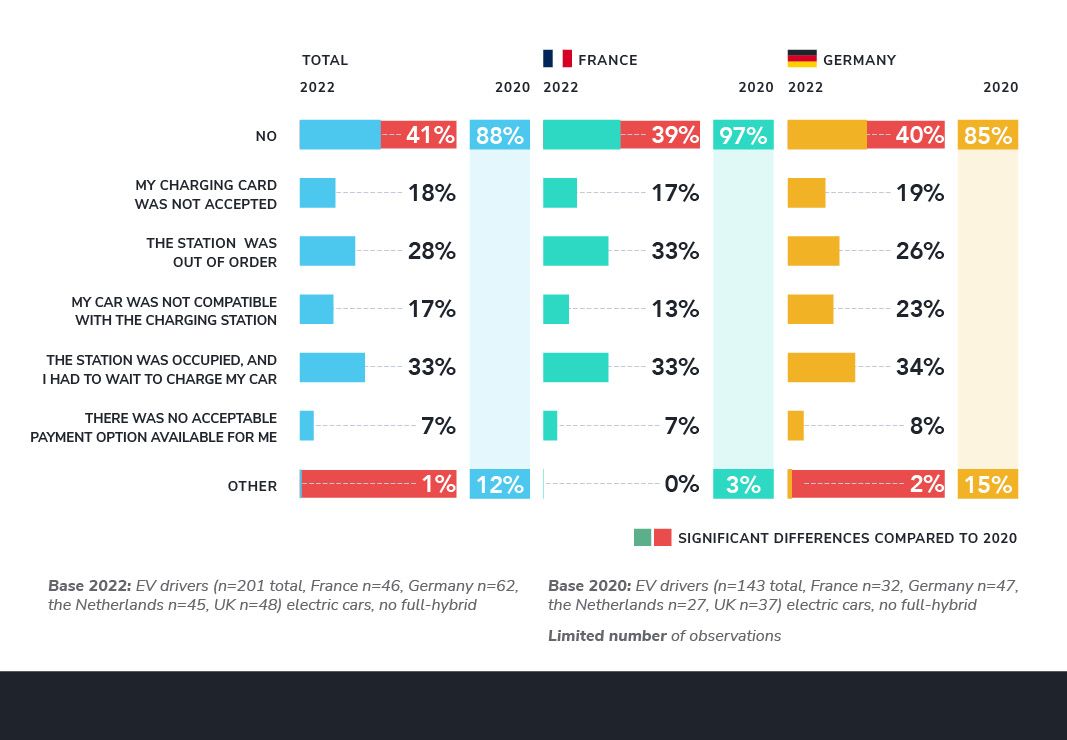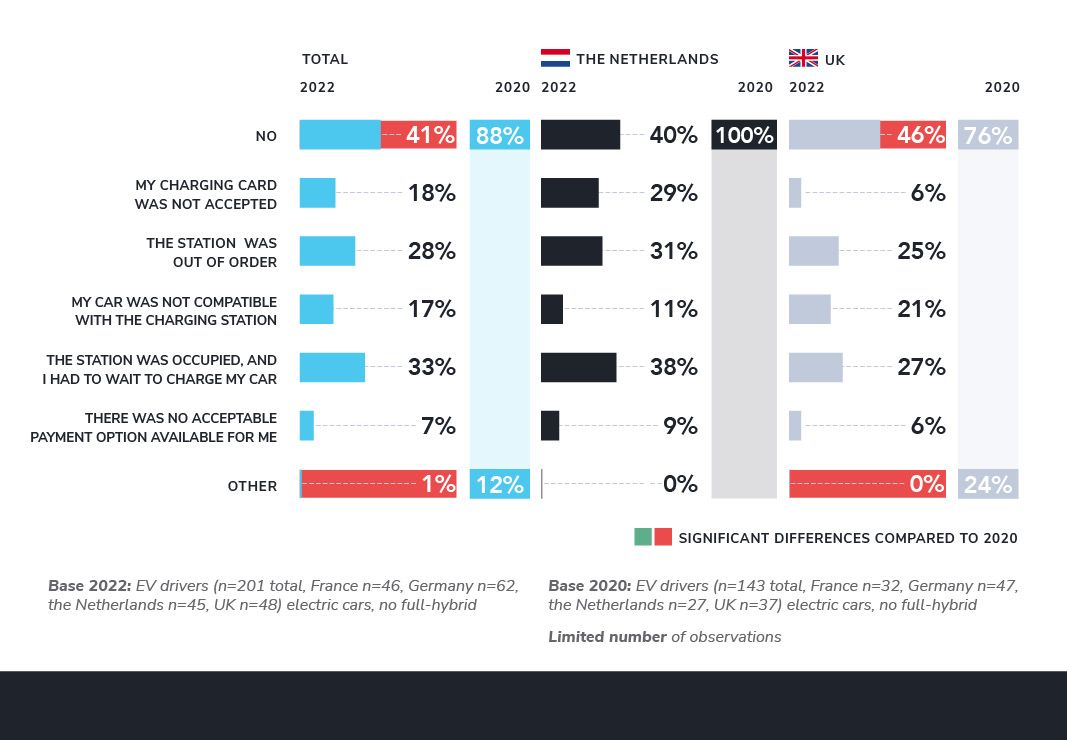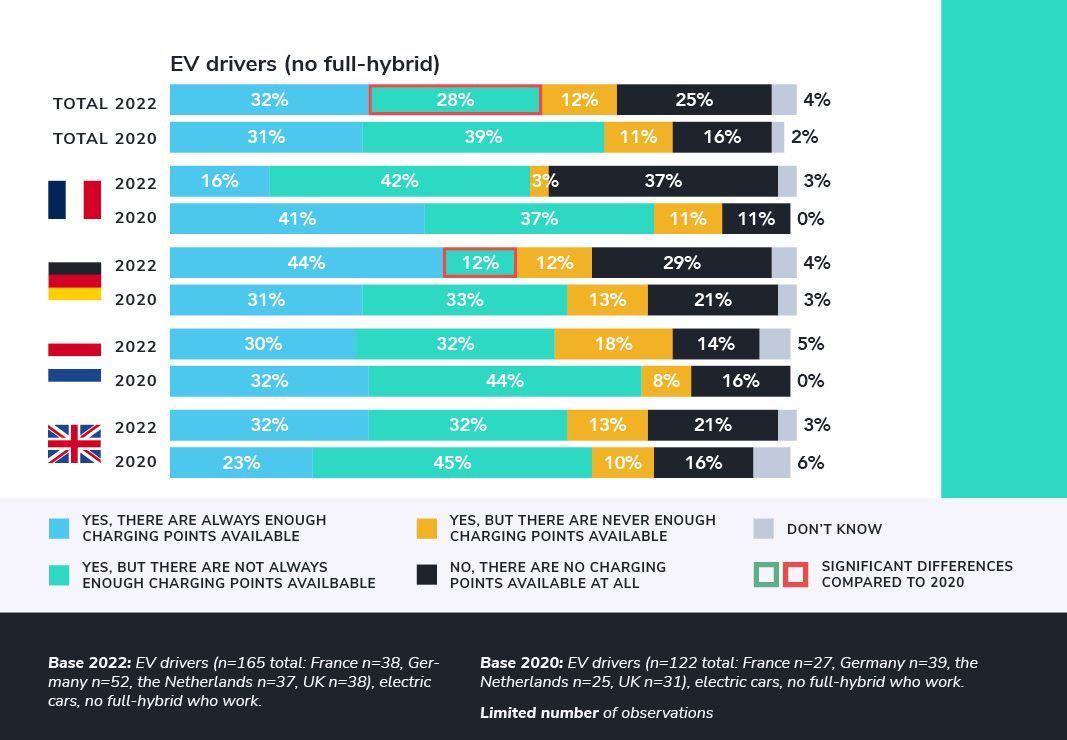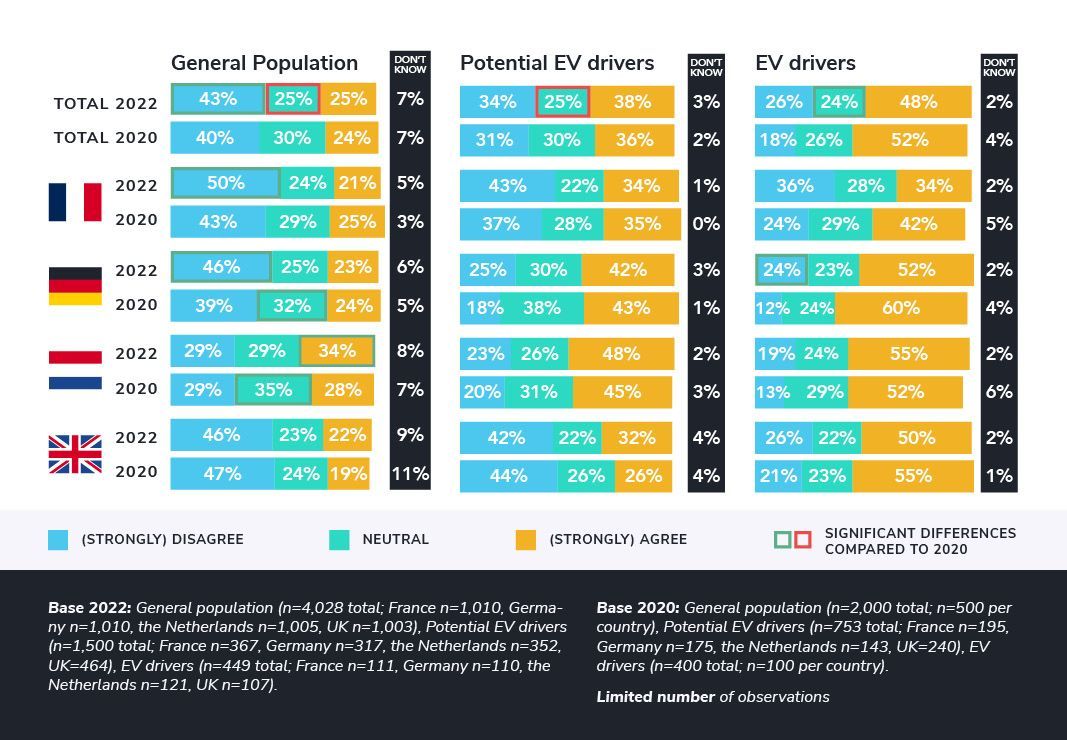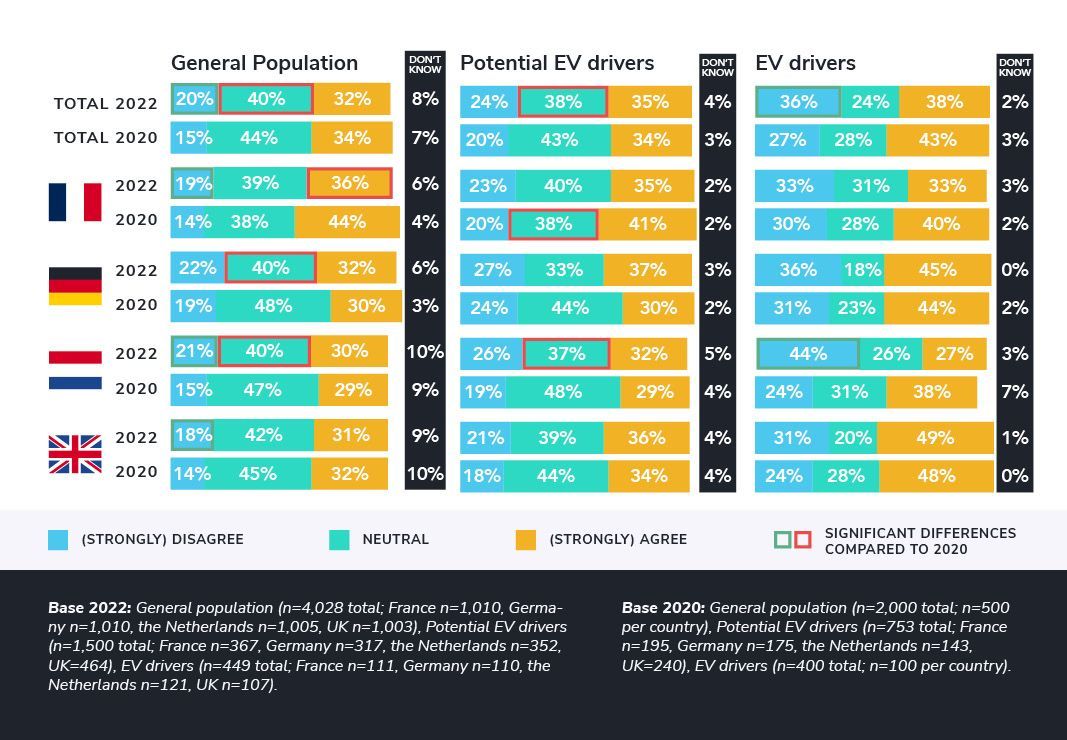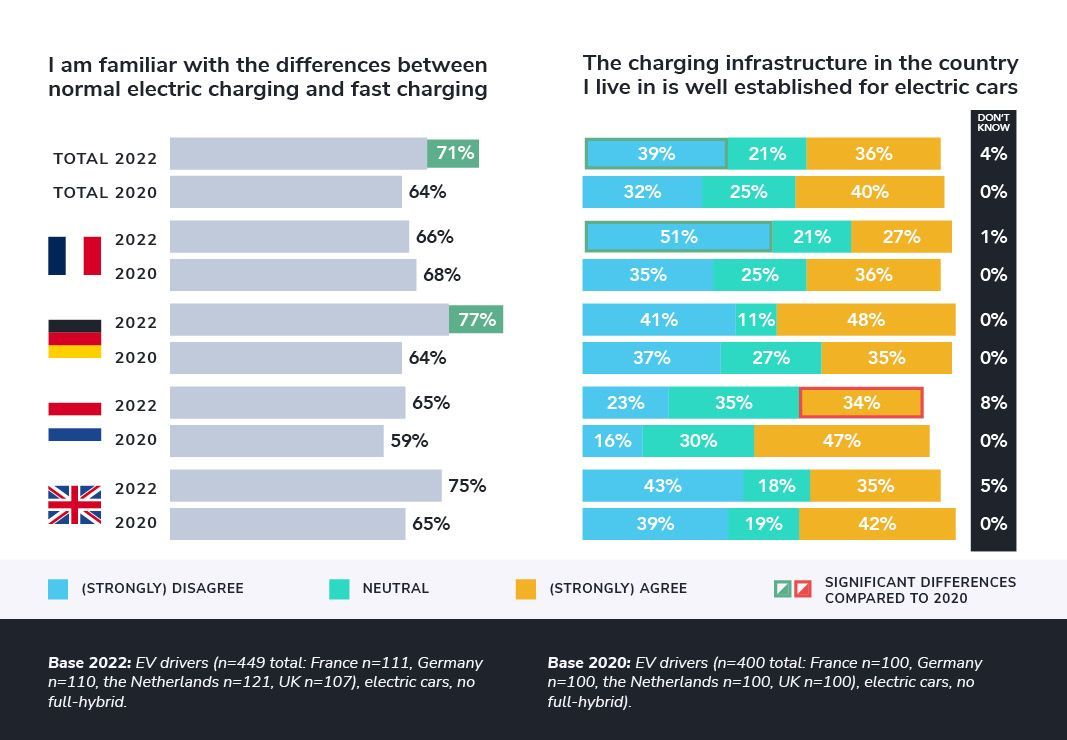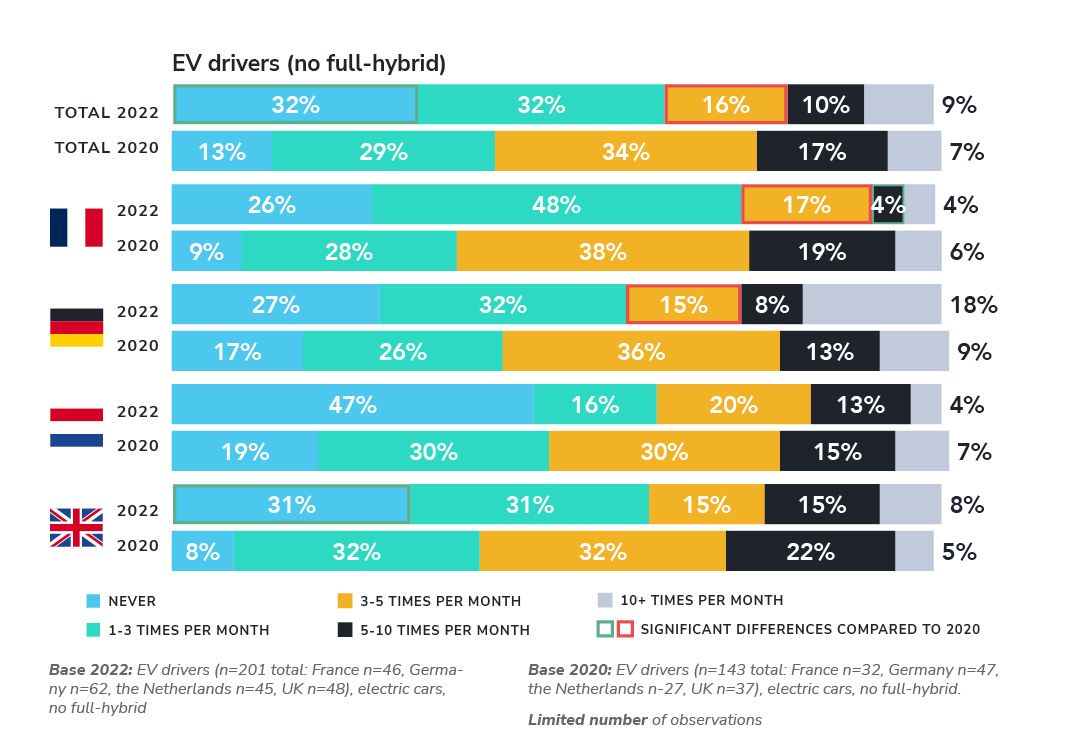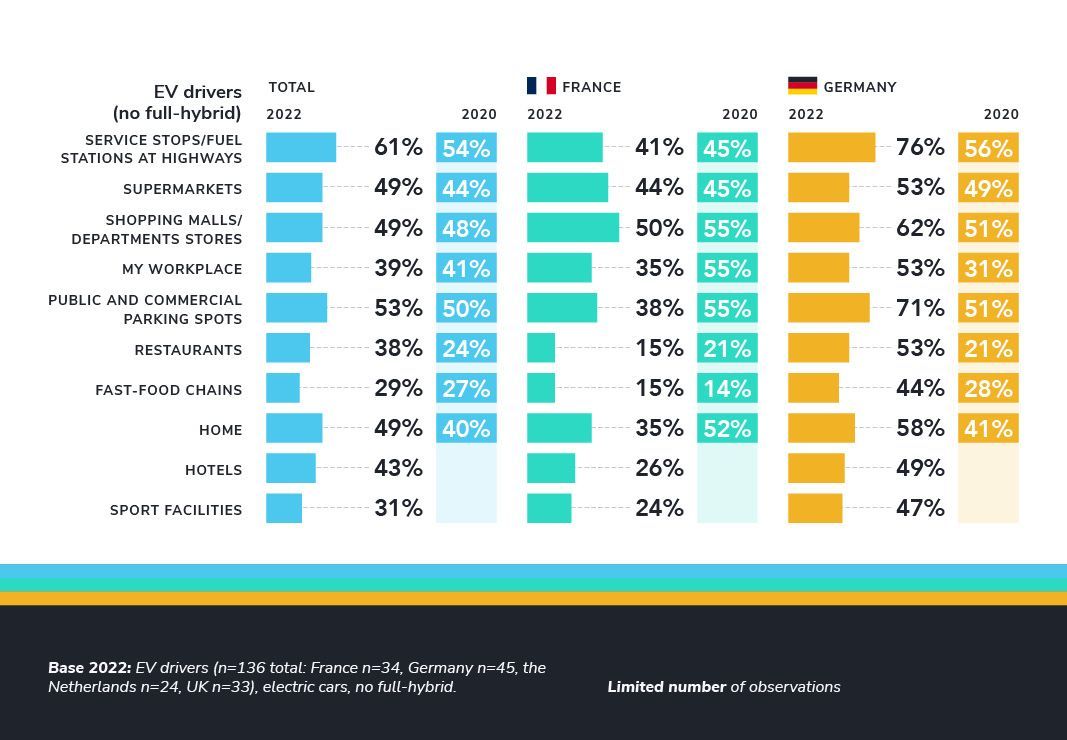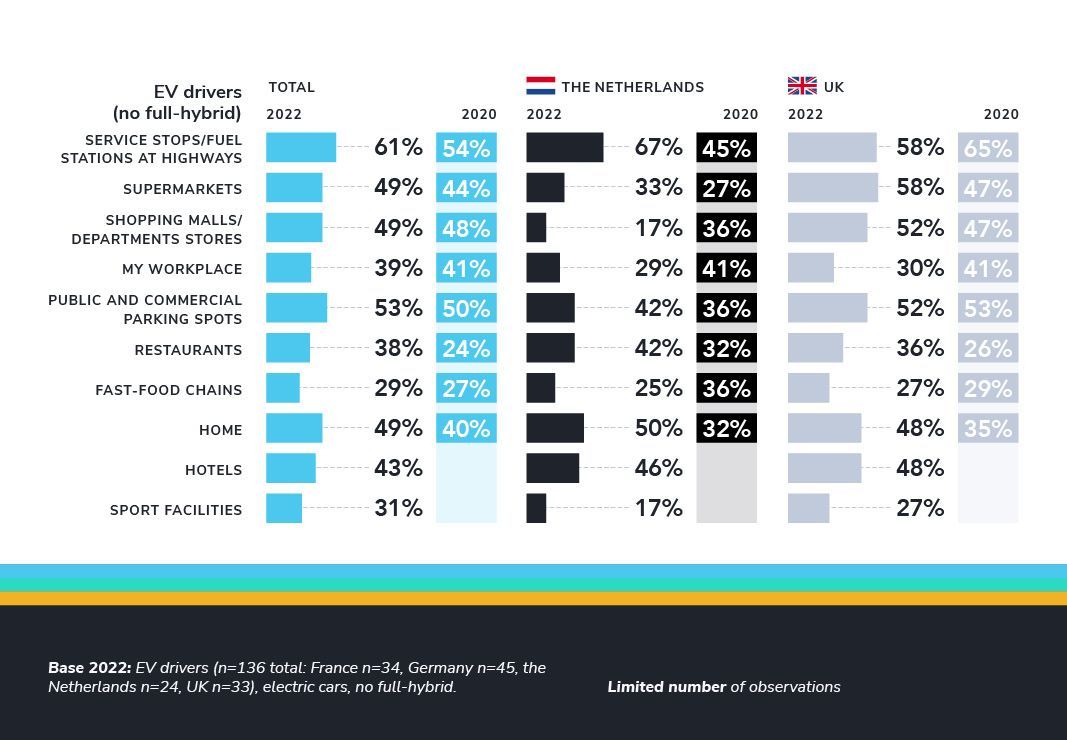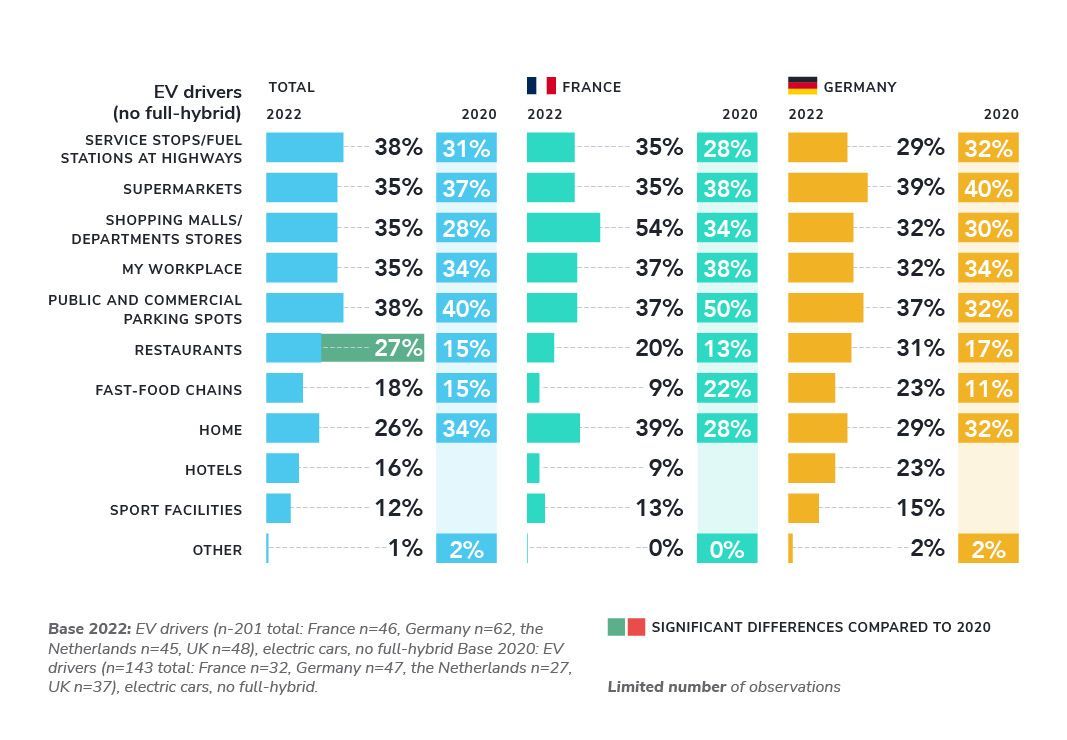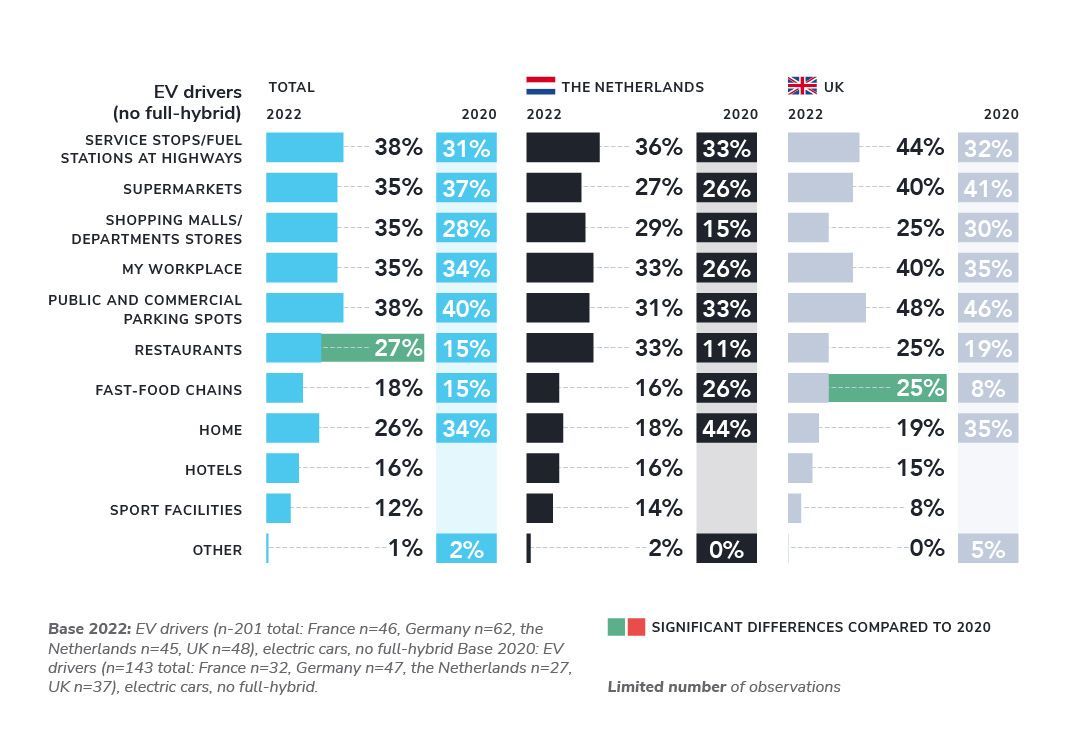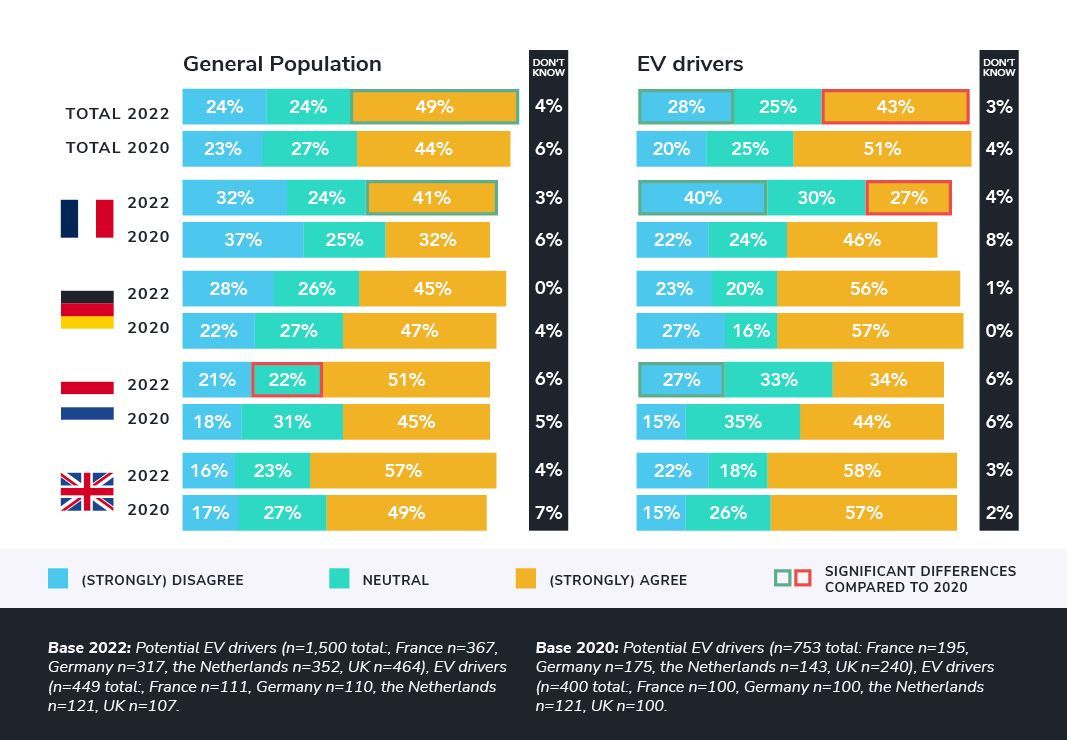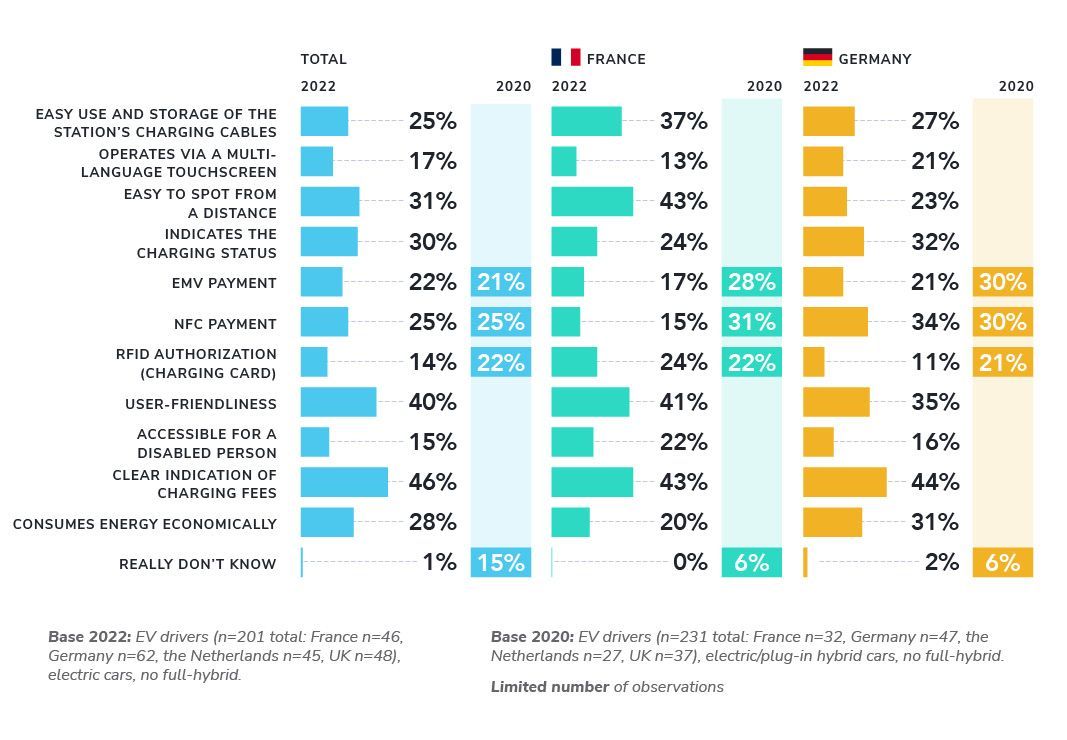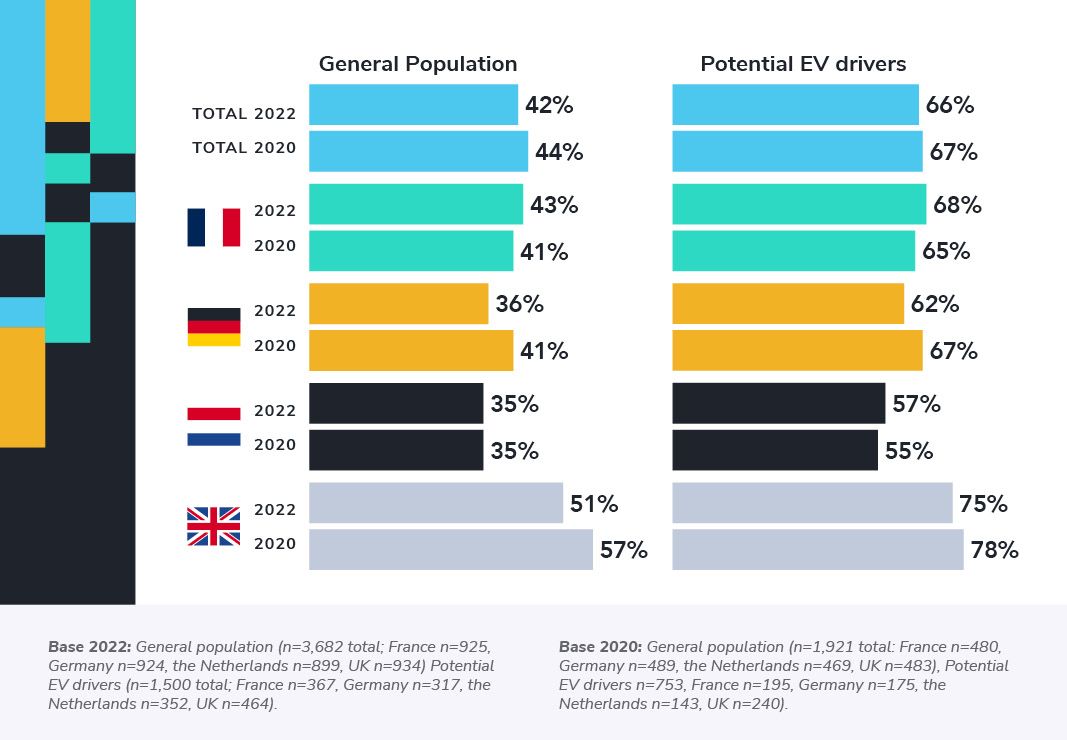1. Current and potential EV drivers
Profile of EV drivers
Current EV drivers are predominantly male, highly educated, and working full-time. They are represented almost equally across all age groups and often drive a private (lease) car and/or a business purchase/lease car.
Potential EV drivers are also fairly divided across all age groups, they work full-time, but they are slightly lower educated than the EV drivers. In addition, the proportion of men is only a bit larger than the proportion of women. The majority of this group drives a private (lease) car while around 1 in 6 does not own a car (anymore).
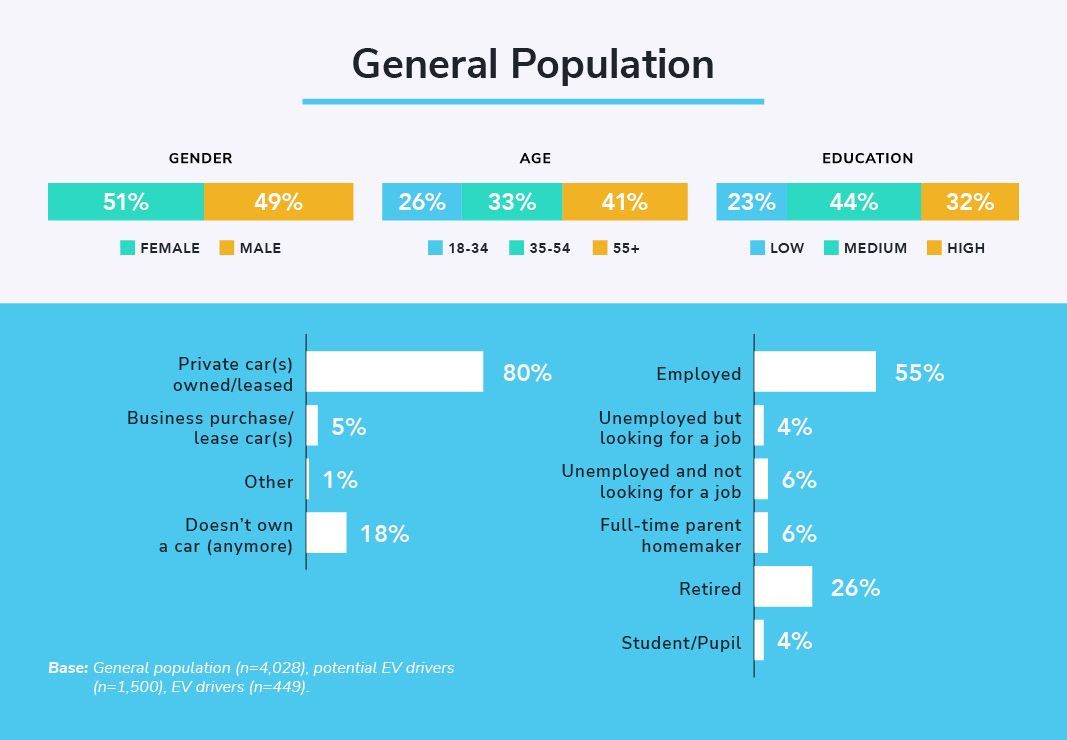
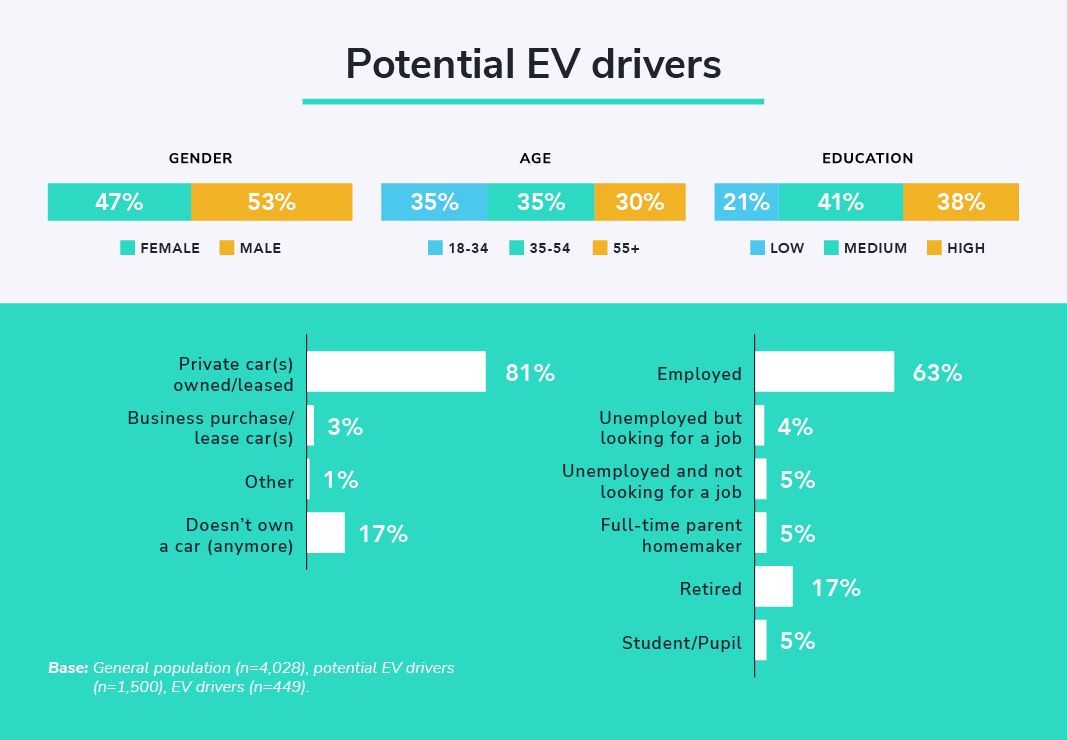
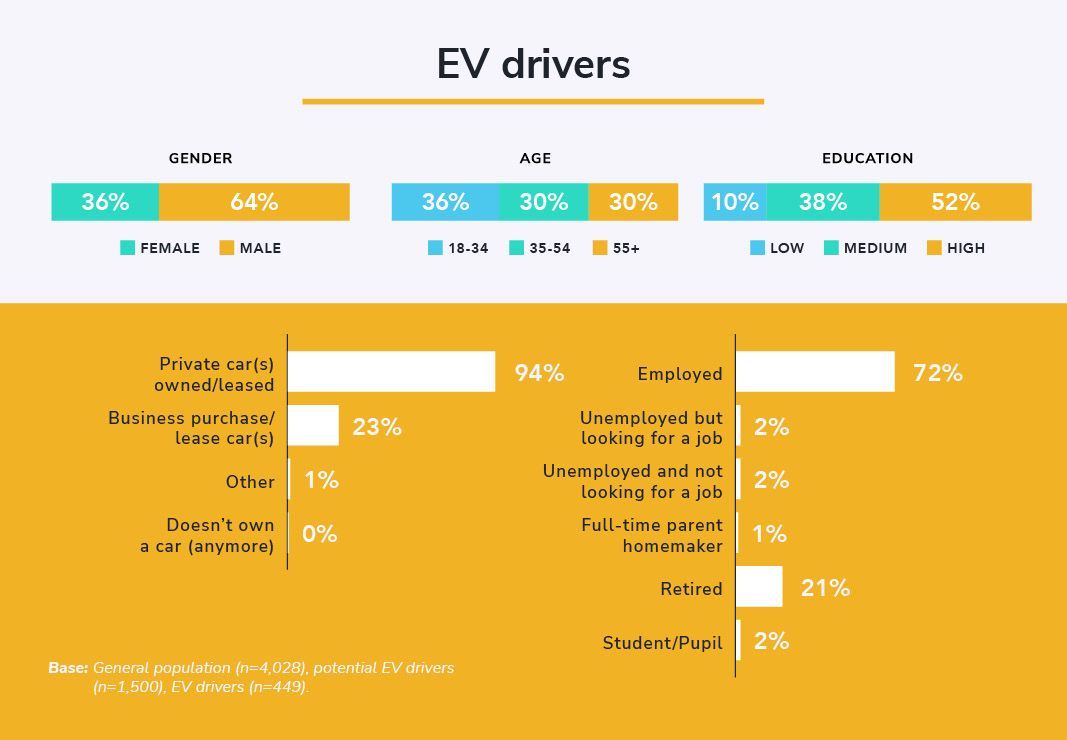
Men are overrepresented among EV drivers
In all countries, there are more male EV drivers than female EV drivers, which is especially the case in the Netherlands. Among German EV drivers, the proportion of women has greatly increased since 2020. Among potential drivers, the male-female distribution is almost equal and comparable to the general population.
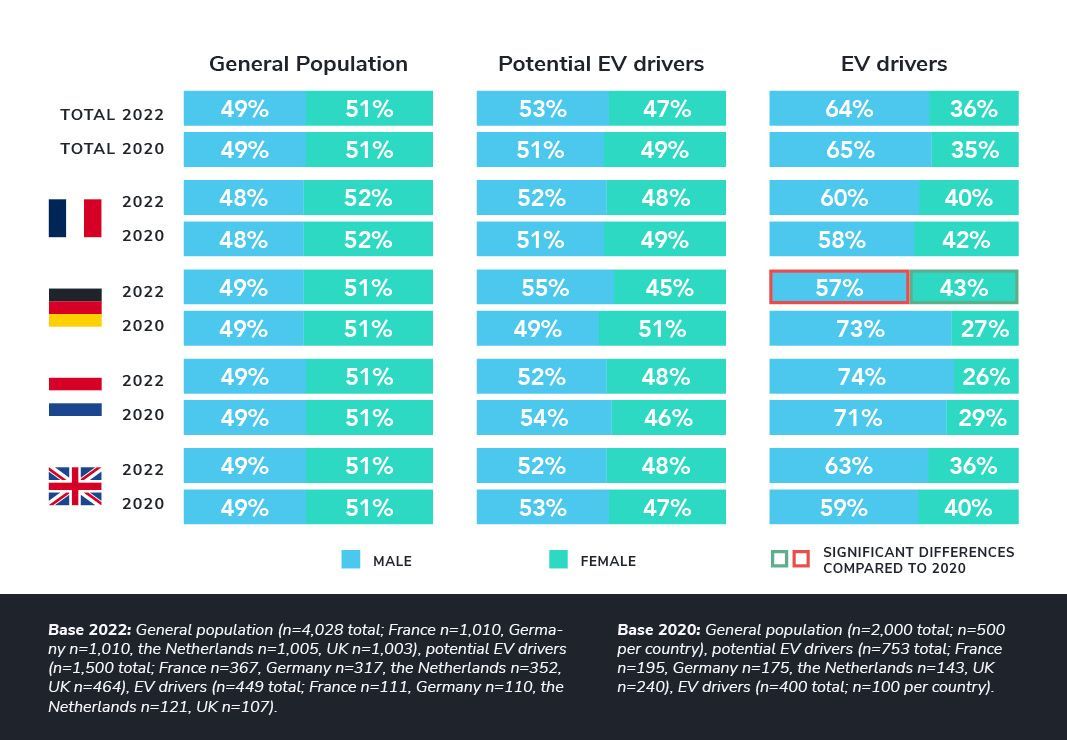
EV drivers are of all ages
Youngsters tend to drive electric slightly more than the others and this is especially the case in the United Kingdom, while in the Netherlands and France they tend to be older. The age group of 55+ has grown in all countries compared to 2020.
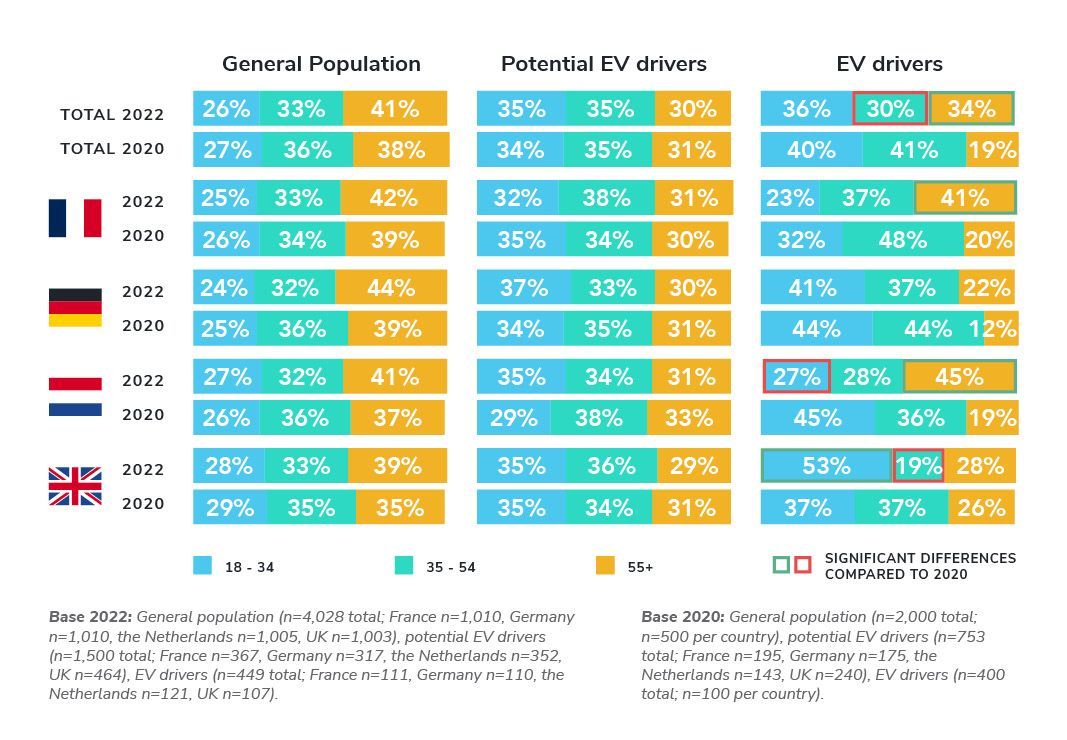
EV drivers are often highly educated
EV drivers are more highly educated than the average citizen, especially in the United Kingdom and Germany. However, French middle-educated EV drivers exponentially increased during the last two years and now represent the majority.
Among potential EV drivers, these tend to be more middle-educated rather than highly educated, and it is especially the case in Germany.
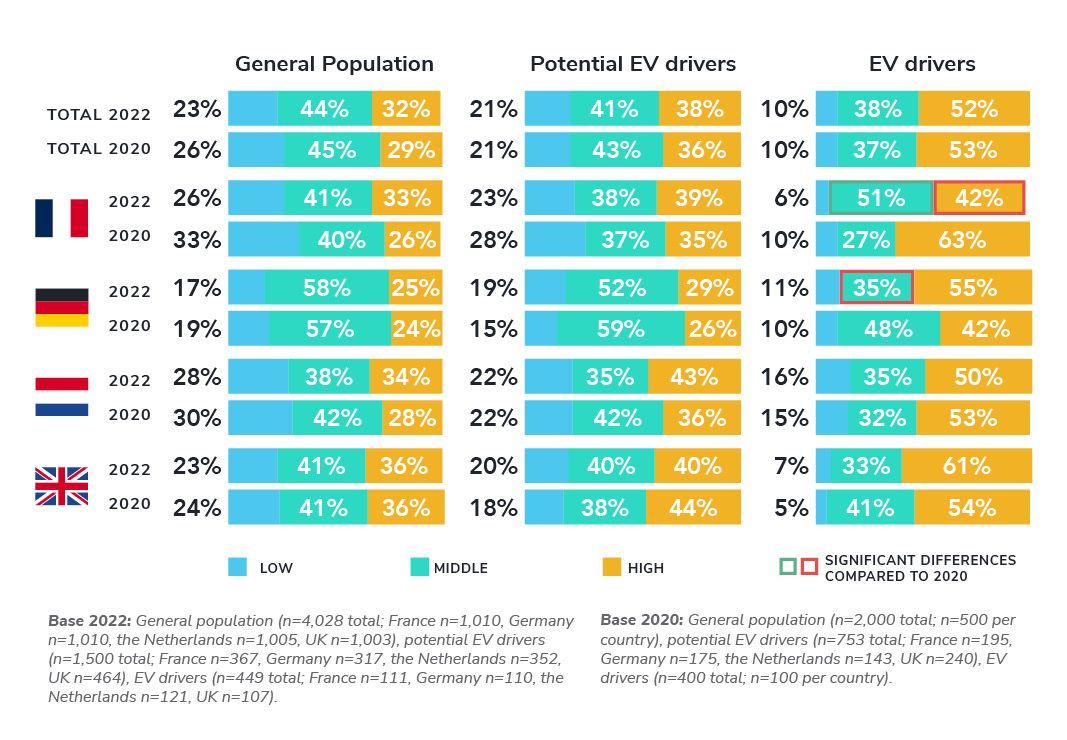
Both EV drivers and potential EV drivers are often full-time employed
Compared to the general population and potential EV drivers, current EV drivers are most often employed. Yet, there is an increase in the share of unemployed EV drivers since 2020. However, in the UK and Germany EV drivers are significantly more often employed compared to other countries.

EV drivers tend to have a partner
Current EV drivers are more likely to have a partner than the general population. This is especially the case among German and French EV drivers, even though among potential EV drivers in Germany and UK, there is a greater tendency not to have a partner as well.
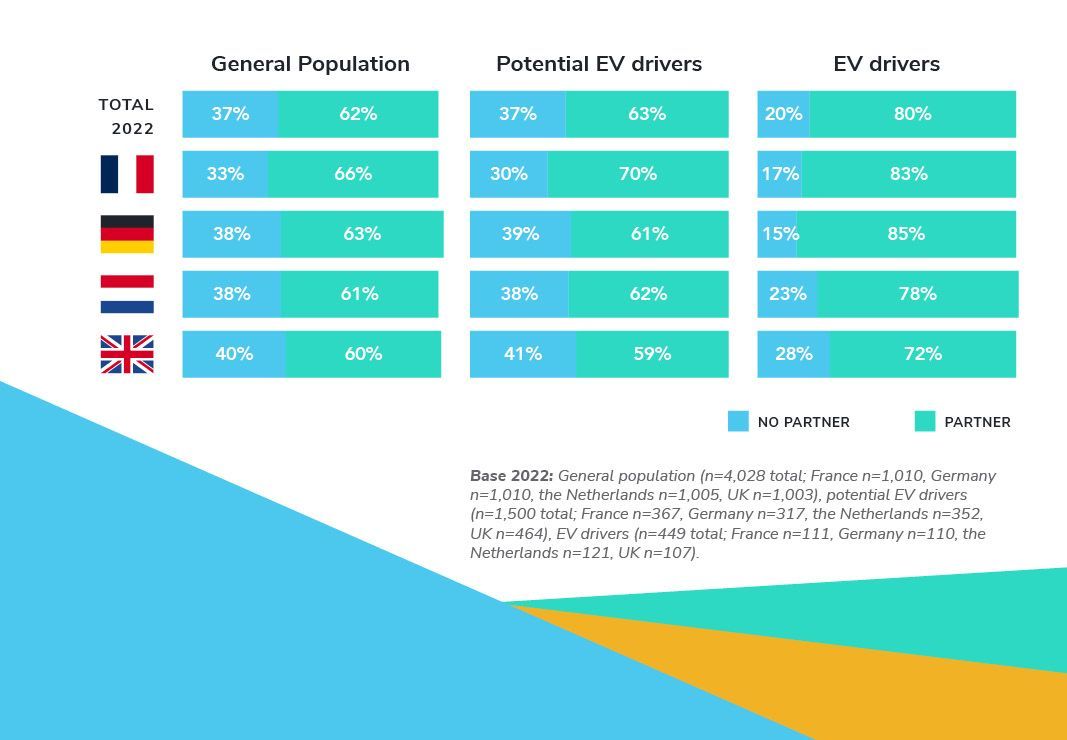
EV drivers are more likely to be part of a bigger household
EV drivers have on average a larger household, especially in the UK and Germany, while the household distribution of potential EV drivers is more similar to the general population, and therefore it tends to be slightly smaller.

Most people own a car, especially EV drivers
The vast majority of EV drivers do own their own car. Whilst this makes sense—if you drive electric, then you probably own a vehicle—what is significant here is that compared to 2020, the percentage of people that do not own a car (anymore) decreased, especially among potential EV drivers.

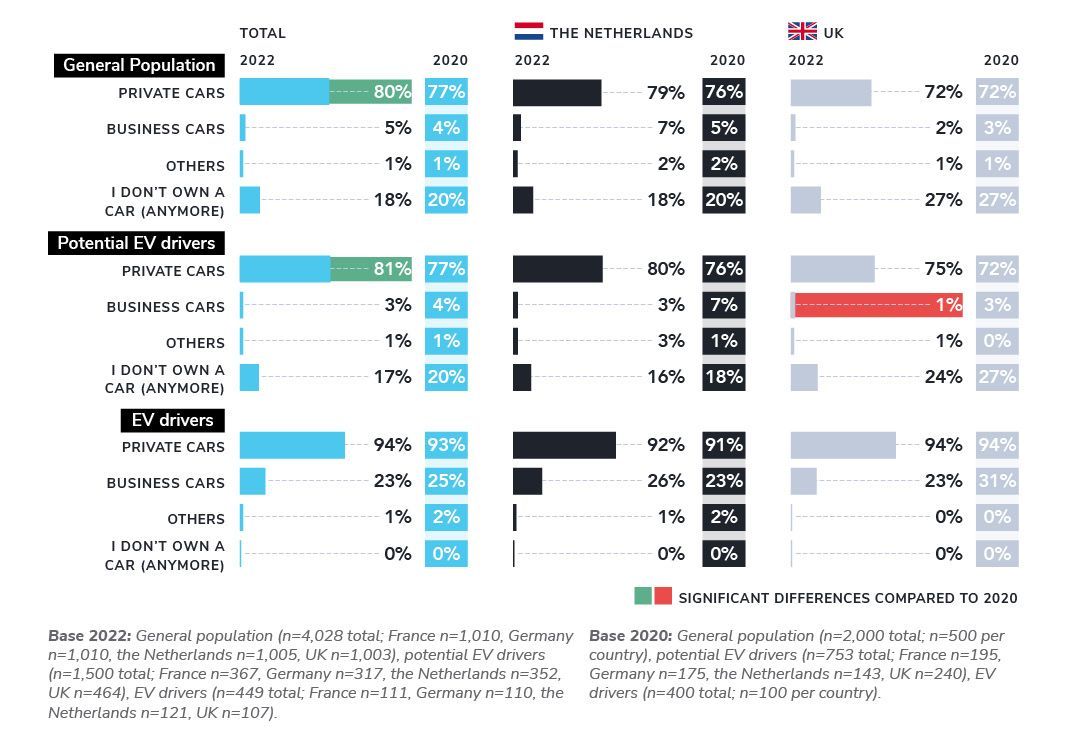
Petrol and diesel cars are still the most common, but the share of EVs is growing
Petrol and diesel cars are still the most used vehicles but in the two years since our last survey, the number of hybrid cars increased among the general population. Moreover, EV drivers that in 2020 used to prefer hybrid cars but are now generally switching to BEVs. This shows a slight decrease in consumers opting for vehicles that rely on traditional fuels.
